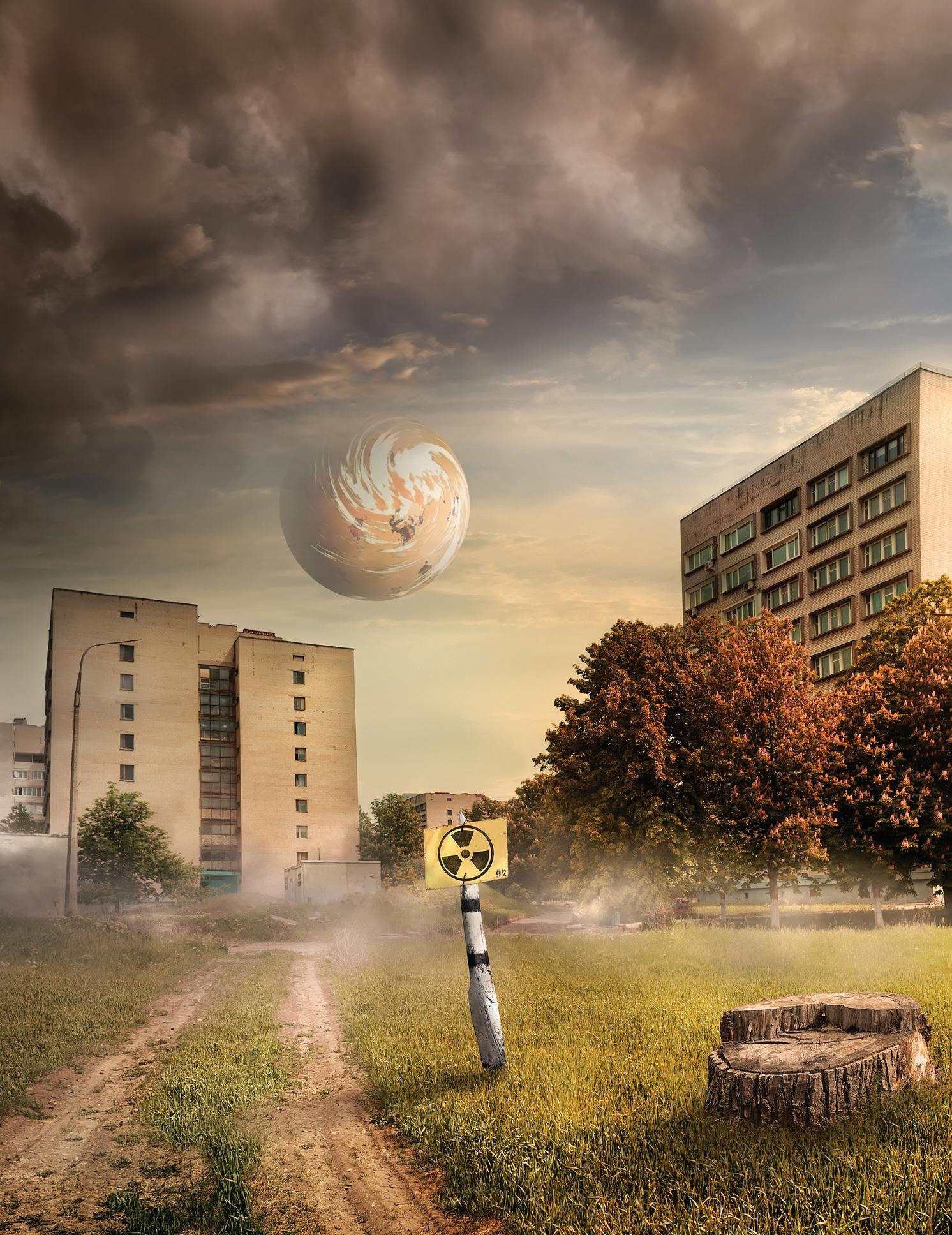
CERT RESPONDER MAGAZINE ® At The Campfire Serving Those Who Serve Their Communities Fall 2019 ARES Deployment Using Bicycles Part 2 CRITICAL INCIDENT STRESS First Responder Safety & Protection GOING WITH THE FLOW: RADIO AMATEUR CIVIL EMERGENCY SERVICE (RACES) For CERT Deployments Swiftwater and Flood Rescue sUAS Equipment Maintenance





2019 FLORIDA CERT CONFERENCE SEPTEMBER 9-14, 2019 NAPLES, FL CERT STRONG REGISTER TODAY! 2019 FLORIDA CERT CONFERENCE PRESENTED BY QUESTIONS? Contact James Cunningham jcunningham@flacertassociation.org or (239) 825-8075 www.FlaCertAssociation.org Learn more at www.flacertassociation.org The Naples Beach Hotel & Golf Club
Mission:
CERT Responder Magazine is dedicated to providing CERT and first responders with information and tools to assist communities in times of crisis, as well as offering a platform for responders to share their stories.

PUBLISHERS: Bob Abrams, Fran Sherman Chris Wahoski
CONTRIBUTING WRITERS: Edward M. Beirne, Theodore Cochran, Vin DiTizio, Environmental Health Media, Wayne Lenzing, Jay Manley, Mark L Miller, Brett Postell, Erika Rogers Marino, Mark Rosenblum
EDITOR/CREATIVE DIRECTOR: Fran Sherman
DIRECTOR OF MARKETING: Bob Abrams
OFFICE MANAGER: Chris Wahoski

To contact to editor Fran Sherman, send email to fran@certresponder.com
®CERT Responder All rights reserved. Photocopying, reproduction, or quotation strictly prohibited without written consent from the editor or editorial committee. Unsolicited material and/or correspondence cannot be acknowledged or returned, and becomes the property of the CERT Responder. The purpose of this publication is to provide a quality publication that educates, informs and connects the CERT and first responder community in the time of crisis, as well as offering a platform for responders to share their stories. To provide comments about CERT Responder Magazine, contact chris@certresponder.com.
06 08 12 32 20 26 24 22 22 05 16 14 19 35 30 34 Departments Features Staff
Inside
Critical Incident Stress ARES Deployment at the Camp Fire First Responder Safety and Protection Expect the Unexpected Radio Amateur Civil Emergency Service (RACES) Using Bicycles GOING WITH THE FLOW: Product Spotlights Teen CERT CERT Spotlight Why Knot? AshBritt’s Safety Corner Marketplace Fall Events The
Magazine, LLC. CERT
2464 Taylor Rd., Suite 202 Wildwood, MO 63040 www.certresponder.com
official publication of CERT Responder
Responder Magazine
SUBMIT
ADVERTISE:
Part 2 For CERT Deployments Swiftwater and Flood Rescue sUAS Equipment Maintenances
YOUR STORY: fran@certresponder.com
bob@certresponder.com SUBSCRIBE to CERT Responder: www.certresponder.com/subscribe
Letter from CERT Responder Magazine
Dear CERT Responder,
We want to thank everyone for your continued support!
Our new and improved website is up and running. Please take a few minutes to check us out at www.CERTResponder.com and provide us with your feedback. Be sure to follow us on Facebook and for Twitter followers, please use hashtag #certresponder for photos and stories you would like to share.
We are very proud of new items constantly being added to the site. We also have your digital login easily available through your back office if you are a registered digital subscriber of the magazine.
In addition, please visit our booth at the Florida Conference on Sept. 9-11, 2019 if you get a chance. We are also working with great companies like MERITS that can track your certifications with approved instructors. We look forward to meeting you in these exciting times!
“Serving those who serve their communities” CERT Responder Magazine
We would also like to send our condolences and prayers to Bob Abram’s family. Bob is one of the founders of this magazine, and he was in a terrible accident July 20, 2019 that resulted in the passing of his wife. everyone here at CERT Responder Magazine wishes you a speedy recovery!
4 CERT Responder Magazine
PRODUCT SPOTLIGHT
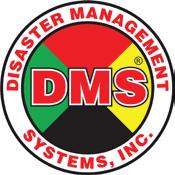
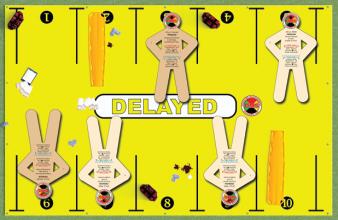



















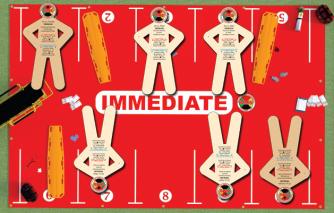

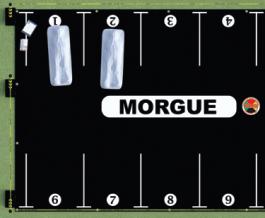






In Part 1, I stated we were barely into the first 24 hours of the incident and I had 38 priorities to accomplish...
ARES DEPLOYMENT AT THE CAMP FIRE
Part 2
BY THEODORE COCHRAN
6 CERT Responder Magazine
This photo shows where the fire burned around us to the east and north.
The number 1 priority was getting paperwork in order to send out to those needing it, in order to insure they had shelter reports and situational awareness for the 0700 IAP. Everything at this point was scribbled in a notebook, and needed to be transferred to the proper ICS forms. I still had personnel in route to the shelters for deployment assignments, due to traffic delays from the still-ongoing evacuations.
I also had been notified by CalOES of deployment to the Law ICP, and had assignment tasks from them I needed to complete. At 2000 hours, the ARC DOC was closing down the net, and resuming 0700 the next day. I finally had a break, and time to get the day’s events in proper order, and complete and send my IAP for the next 12 hours. I was already working on a 16-hour day without a break. There was no time for one now—I still had too much to do. I assigned my radio operators their work schedules, assigned tasks, and completed updates to my ICS-205, 205A, 202, 206, and 208. I had my Com T Robert transfer all of the 309 Com Log into a digital format, making it easier to manage, as the incident continued expanding. I made sure he had everything he needed in place going forward. The time was 0200, and we now had a good situational awareness of where we stood.
check point to the incident perimeter and checked in with the Highway Patrol. Then I moved forward to the ICP. Once there, I checked in with the MIGU staff and got briefed on what we were doing. For the next three days, we issued cache radios to
Day 2 was beginning, and I would now be redeploying at 0500 hours for CalOES to the Law ICP at Butte College.
incoming S&R, Law enforcement officers, and corner teams, and maintained internet and cell services. By this time, almost all major carriers were working around the clock to restore services where they could. Five days into the incident, I was re-assigned to the CalOES Basecamp at the
Chico Airport, and assisted in installing satellite communications, cell services, two VTAC repeater systems, and point to point WIFI to Comcast. During this period, I was in constant contact with my ARES teams, filling in on two occasions in the early morning hours to overcome sickness of personnel who had come down with the NARO Virus brought in by evacuees. All the while, I maintained the regular data/cell service reports, for the various shelters for CalOES HQ. ARES was released for DEMOB at 1800 on the 13th, and I put my team on standby. Five days later, the EC assisted NAVDAG with radio installation for animal disaster vehicles. This continued until NAVDAG started DEMOB. On the 22nd on November, we were put on standby over Thanksgiving weekend. CERT
Day 2 was beginning, and I would now be redeploying at 0500 hours for CalOES to the Law ICP at Butte College. At 0230, I had everyone take time to get some sleep, coordinated with the security and ARC site manager regarding who was authorized in the com room, and arranged for checks periodically with com personnel, insuring their safety.
At 0400, it was time to head out for the ICP, loaded and ready to go. First priority of the deployment: data up-speeds and down-speeds for the commercial carriers in the area. Then I sent out a report to CalOES HQ. Second priority: check shelters communications, and again check data up- and down-speeds, cell coverage, and report this back to HQ. I arrived at the

CERTResponder.com 7
First Responder Safety and Protection:

Centers for Disease Control and Prevention (CDC) Resources and Training for Chemical and Radiation Emergencies
Every day, emergency responders may face health hazards while working to save the lives of others. They are the first to arrive on scene and often times play several roles in providing support for disasters and emergency situations. The Centers for Disease Control and Prevention (CDC) provides several resources to help the public, public health, medical, and public safety communities prepare for and respond to emergencies involving radiation and chemicals.
8 CERT Responder Magazine
COURTESY ENVIRONMENTAL HEALTH MEDIA (CDC)
Collaborative efforts with state and local health departments to educate first responders about preparing for emergencies—natural disasters, chemical and biological threats, mass casualties, and radiation emergencies—are an essential part of CDC’s commitment to protecting the public’s health. These efforts include (1) focusing on training to strengthen the ability of first responders to prepare and respond to natural or man-made disasters, (2) identifying any gaps that may be helpful in improving response efforts to these types of incidents, and (3) monitoring the health and safety of responders in a largescale emergency. CDC provides technical assistance, training, and tools to support first responders in their emergency planning and preparedness activities.
RADIATION EMERGENCY PREPAREDNESS AND PLANNING
Some first responders may not be sure of what to do in a radiation emergency versus a fire or other natural disaster. Whether the incident is intentional or unintentional, it is important to be aware of preparedness and response information that can be referenced before, during, or after a radiation emergency. For first responders, CDC resources that may be helpful include the following training products:
• Radiation Basics Made Simple is an online training that explains radiation concepts through short, engaging, and educational videos. The videos cover topics ranging from radiation in our everyday lives to radiation emergencies. Information which may be of particular interest to first responders are topics on Radiation Protection, Decontamination, and Responding to Radiation Emergencies which includes information on the different types of radiation emergencies and how public health and partner agencies respond to radiation emergencies.
Although the Radiological Terrorism: Just-In-Time Training Video for Hospital Clinicians focuses on the role of clinicians in responding to radiation emergencies, much of the information is helpful for on-the-scene first responders as well. The 17-minute
video provides an excellent overview and scenarios that include training on caring for and treating patients exposed to radiation in an emergency situation. As first responders are responsible for rescuing and providing care for victims in an emergency, the scenario topics on Ambulatory Decontamination, Uninjured Patient with Exposure and Contamination and Personal Protective Equipment (PPE) provide on-the-spot training for patient and responder safety. Also, radiation principles such as time, distance, shielding, and contamination in an emergency care setting are
The goal of ERHMS™ is to prevent short-term and long-term illness and injury in emergency responders.
featured in the patient care scenarios.
• Screening People for External Contamination: How to Use Hand–held Radiation Survey Equipment provides information about radiation detection equipment or Geiger counters and how to use them to determine if people are contaminated with radioactive material. The 18-minute video provides hands-on instructions on the different types of radiation detectors, how to determine if the detector is working properly, and what to look for when selecting Geiger detectors.
These and many more resources are available on CDC’s Radiation Emergencies website at https://emergency.cdc. gov/radiation/index.asp. Additional informational resources can be found on the Radiation Emergency Medical Management (REMM) website at https:// www.remm.nlm.gov/.
FOURTH GENERATION
CHEMICAL AGENTS
After an incident in the United Kingdom (U.K.) in March, 2018 involving a
fourth generation chemical agent, the White House National Security Council convened a federal interagency working group (FIWG) to identify and develop resources to help the emergency response community prepare for and respond to a fourth generation agent incident if one ever occurs in the U.S., as well as support the development of specific guidance and training to enhance overall preparedness efforts. For additional information please see https://www.tandfonline.com/doi/full/ 10.1080/15563650.2018.1469759. These resources meet the needs of U.S. emergency response professionals who sought to learn more about the agent used in the U.K. and how to protect themselves and respond if such incidents ever occur in their communities.
Fourth generation agents, also known as Novichoks or A-series nerve agents, belong to a category of chemical warfare agents that are unique organophosphorus compounds. They are more persistent than other nerve agents and are at least as toxic as VX nerve gas. Additional information on VX can be found at https://emergency. cdc.gov/agent/vx/basics/facts.asp. While fourth generation agents share similar characteristics with other nerve agents, they also pose several unique challenges in terms of toxicity, detection, persistence, and potential for delayed onset of symptoms. The following resources were developed to address these characteristics and challenges and provide tailored guidance to various segments of the emergency response community.
• Safety Awareness for First OnScene Responders Bulletin – Designed to educate and prepare first responders for situations when law enforcement, fire, and emergency medical services (EMS) personnel are first to arrive on scene and initially may be unaware that a fourth generation agent is present. This bulletin will assist departments and agencies in developing specific guidance and training to enhance overall preparedness efforts. (PDF - 791 KB)
• Reference Guide – Designed to educate and prepare hazardous materials (HAZMAT) response teams, the
CERTResponder.com 9
guide includes chemical and physical properties of fourth generation agents, as well as detection, firefighting, personal protective equipment, and decontamination recommendations for situations when responding to a known or suspected fourth generation agent incident. This guide will assist HAZMAT response teams in developing specific guidance and training to enhance overall preparedness efforts. (PDF - 789 KB)
• Medical Management Guidelines
– Designed to educate and prepare fire, EMS, and hospital staff and guide the medical management of patients exposed or potentially exposed to a fourth generation agent. (PDF - 858 KB)
(Note: This document is divided into two Web pages, one for pre-hospital care and one for in-hospital care.)
• Pre-hospital Medical Management Guidelines
• Hospital Medical Management Guidelines
These resources were developed by a FIWG made up of experts in medicine, science, public health, law enforcement, fire, EMS, HAZMAT, and occupational safety and health from the U.S. Department of Defense and U.S. Department of Health and Human Services (specifically the Office of the Assistant Secretary for Preparedness and Response and National Institute for Occupational Safety and Health in the Centers for Disease Control and Prevention). Additionally, experts from the Department of Transportation (Pipeline and Hazardous Materials Safety Administration and National Highway Traffic Safety Administration’s Office of Emergency Medical Services), Department of Homeland Security, Federal Bureau of Investigation, Occupational Safety and Health Administration, and Environmental Protection Agency were also members of the FIWG.
The resources are based on current information and previously developed federal guidance related to nerve agents. In addition, the guidelines and other documents were developed through a collaborative effort with input from the emergency response community. The information
will assist first responders who may not be aware that a fourth generation agent is present during a hazardous incident and help protect responders if such an incident occurs in the U.S. As new information becomes available, the resources will be updated to support any responses to a potential fourth generation agent incident.
For more information on these and other resources for a chemical emergency, see https://chemm.nlm.nih.gov/nerveagents/ FGA.htm.
EMERGENCY RESPONDER
HEALTH MONITORING AND SURVEILLANCE™ (ERHMSTM) FRAMEWORK
Monitoring responder health and safety is an important part of any emergency response. The CDC’s National Institute for Occupational Safety and Health (NIOSH) led a federal interagency work group to develop the Emergency Responder Health Monitoring and Surveillance (ERHMS™) framework. ERHMS™ allows an organization to monitor the health and safety of emergency responders, including response and recovery workers, throughout the pre-deployment, deployment, and post-deployment phases of a response.
ERHMS™ aims to ensure that specific activities to protect the health and safety of emergency responders are conducted during each of the three phases of a response (Figure 1). The goal of ERHMS™ is to prevent short-term and long-term illness and injury in emergency responders. The ERHMS™ framework can be used during small, large, and all-hazards events, including during a radiation or chemical response.
The guidance for how to implement these activities and specific tools for each phase of the response can be found in the Emergency Responder Health Monitoring and Surveillance: National Response Team Technical Assistance Document. ERHMS™ has been used effectively by organizations, including the CDC during the Ebola response in 2014, the Georgia Department of Public Health during Hurricanes Matthew and Irma, and the Oregon Health Authority during a mass shooting event in 2015.
Any state receiving CDC Public Health
Emergency Preparedness cooperative agreement funding can use capability 14 (Responder Safety and Health) or 15 (Volunteer Management) to implement ERHMS™. To increase an organizations’ ability to implement and adopt ERHMS™, NIOSH has developed ERHMS Info Manager™, a no cost custom-built software product that uses Epi Info™ for all calculations and analyses during the pre-deployment, deployment, and post-deployment phases of a response. ERHMS Info Manager™ allows users to manage responder readiness by collecting information on rostering, training, and medical screening. This information improves organizations’ preparedness prior to a disaster and enables them to make decisions by analyzing exposure data collected during a response. NIOSH has also developed a user guide and training videos to accompany the software and has collaborated with Epi Info™ to ensure technical support is available to all users at no cost. More information on ERHMS™ and ERHMS Info Manager™ can be found at www. cdc.gov/niosh/erhms.
For more information about these and other related topics and resources, please visit the following websites:
• Chemical Emergency Information for First Responders https://emergency.cdc.gov/chemical/ responders.asp
• Disaster Resources https://www.cdc.gov/disasters/disaster_ resources.html
• Health and Safety Planning Guide https://www.dhs.gov/sites/default/ files/publications/IND%20Health%20 Safety%20Planners%20Guide%20 Final.pdf
• Radiation Contamination vs. Exposure https://emergency.cdc.gov/radiation/ contamination.asp
• Radiation Emergency Training, Education, and Tools https://emergency.cdc.gov/radiation/ training.asp
• Training for Chemical Emergencies https://emergency.cdc.gov/chemical/ training.asp CERT
10 CERT Responder Magazine
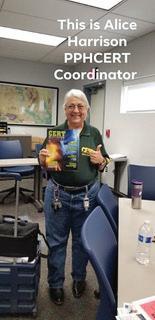
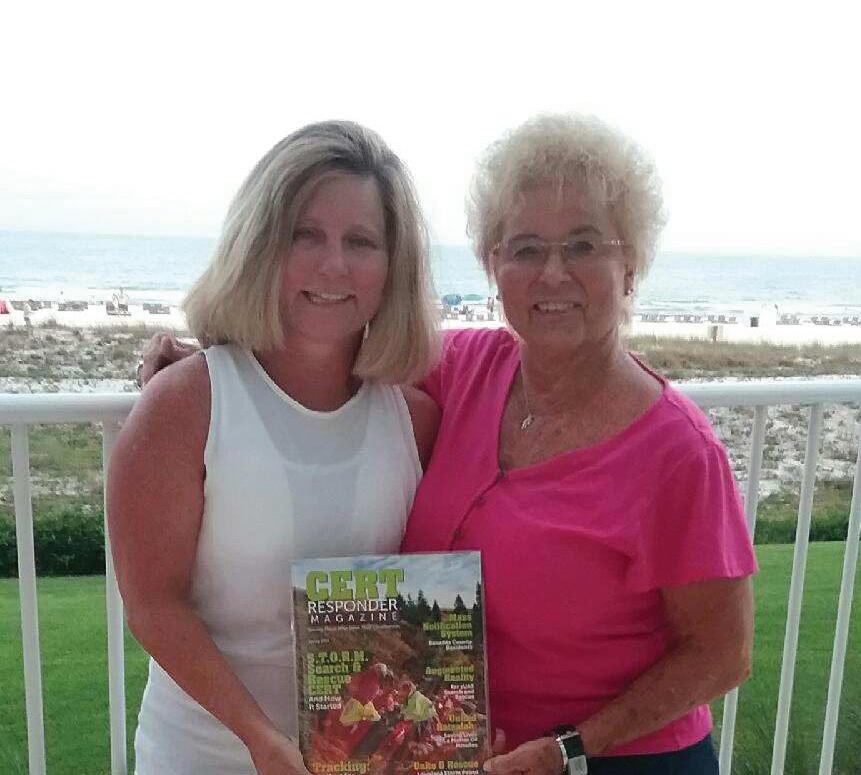

CERTResponder.com 11 CERT on the road If you have a picture of you or your group holding a copy of CERT Responder Magazine while traveling, please feel free to share it with us so it can be enjoyed by other CERT members. Send your submission to : fran@certresponder.com. Any picture that we place in the magazine, the sender will be rewarded with a CERT Responder Magazine T-shirt. Gulf Shore, Alabama CERT meet members from various communities
EXPECT THE UNEXPECTED Fort Lauderdale Water Emergency
BY MARK L MILLER, FORT LAUDERDALE CERT DEPUTY CHIEF
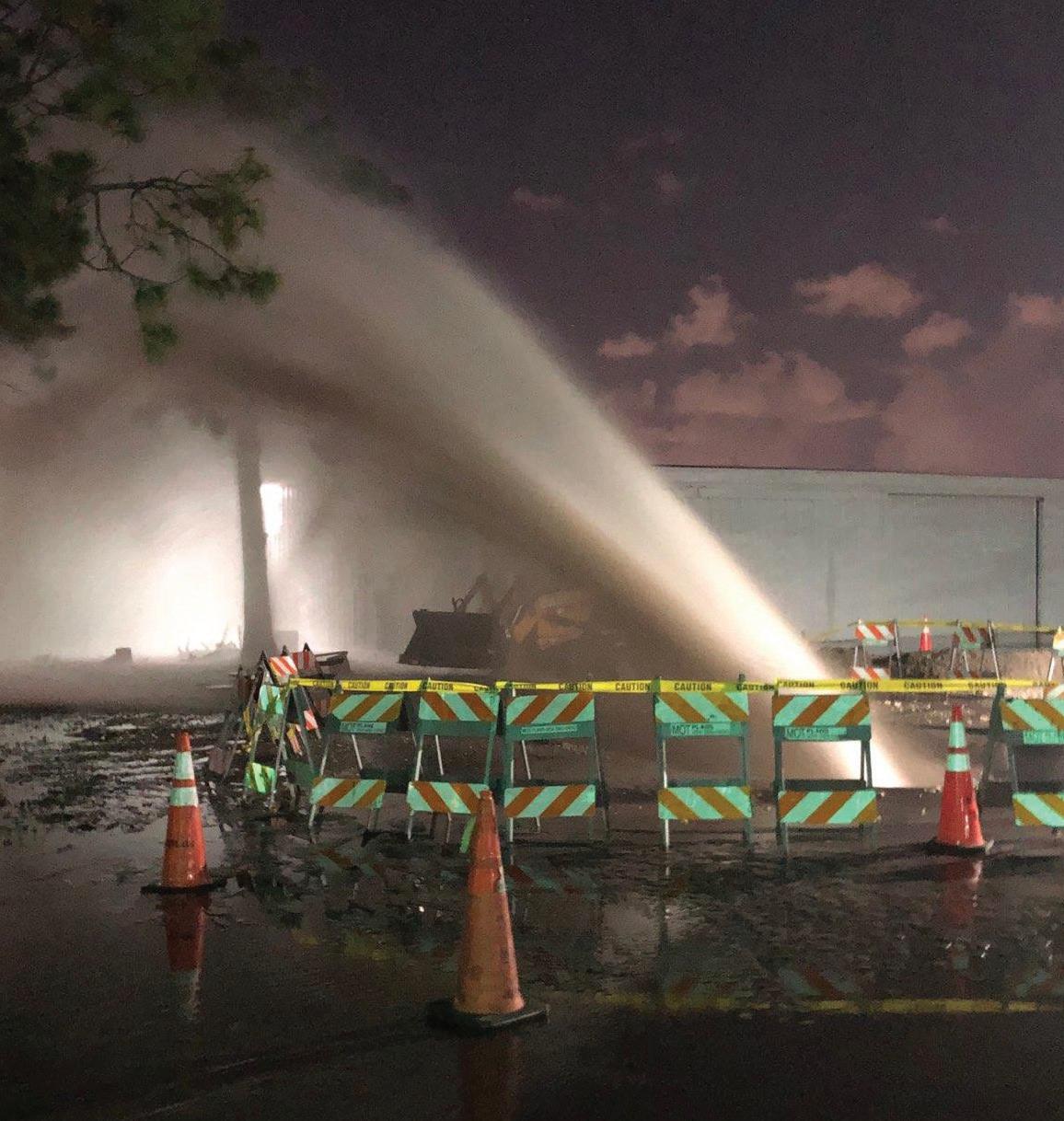

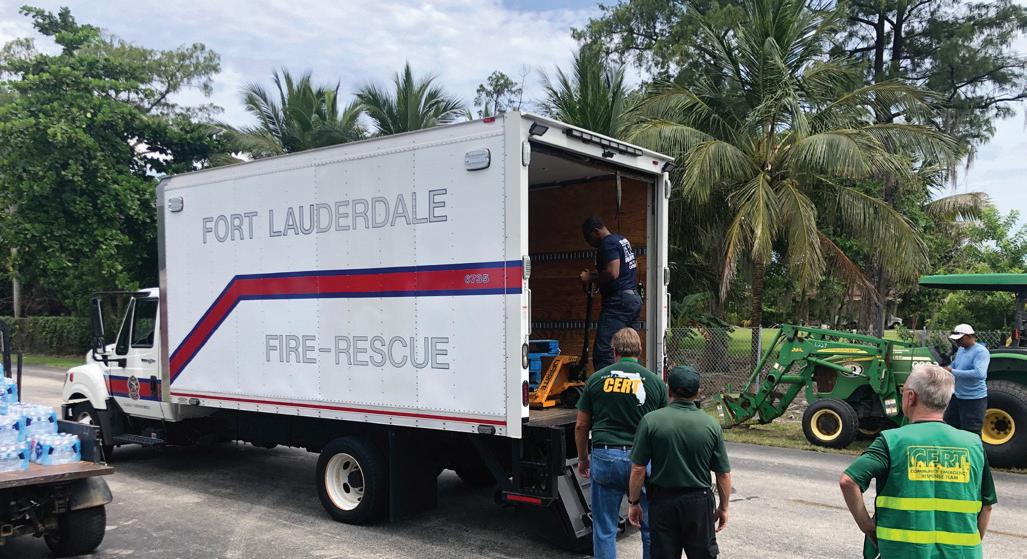
Fort Lauderdale Emergency Management conducts Point of Distribution (POD) training annually for volunteers with CERT and personnel from the city’s departments of Fire Rescue, Parks and Recreation, and Police. The training earlier this year was well received and served to sharpen everyone’s skills in anticipation of what most thought would be the cause of a POD activation – a hurricane.
On the afternoon of July 17, 2019, a contractor ruptured a 42” feed pipe to the Fiveash Regional Water Treatment Plant. This plant, capable of processing up to 70 million gallons of water per day, is the main supply source to approximately 250,000 residents in the cities of Fort Lauderdale, Oakland Park, Wilton Manors, Lauderdale By the Sea, Tamarac, and Davie.
Due to the severity of the damage and timeframe for the repair, the FLL Emergency Operations Center was activated at 2am the next morning and a State of Emergency was declared by the Mayor. Residents were told to expect to be without water for 24-36 hours. Alerts went out to CERT Leadership starting at 5am and an assessment/activation meeting was held at 10am.
By 12pm on July 18th, CERT and Parks and Recreation personnel had the POD equipment set-up on location at three distribution points across the city of Fort Lauderdale. The
distribution sites were staffed with Fort Lauderdale CERT volunteers and employees from the City’s Parks and Recreation department. “Mutual-aid” volunteers from several cities in the County assisted. These included Cooper City, Coral Springs, Davie, Deerfield Beach, and Margate, Sunrise, Miramar and Pompano a Beach.CERT activities and responsibilities were numerous: ensuring the efficient flow of vehicles thru the POD sites, working with other departments to coordinate the timely resupply of water to each location, regular status reviews with reports back to the EOC from each of the three locations, and loading cases of water into vehicles.
The water supply pipe was repaired on Thursday, July 18, 2019 but a boil water order was in effect for the next 5 days. As a result, the POD’s were activated for the next 5 days from 8am-8pm and manned by 66 CERT volunteers. If you’re counting, a total of over 500,000 bottles of water were distributed! CERT
12 CERT Responder Magazine
GROUND FLOOR OPPORTUNITY FOR THE RIGHT PERSON!
CERTResponderMagazine is searching for an aggressive and experienced salesperson to present our magazine to potential advertisers. This position is commission driven with incentives.
CERTResponderMagazine is quickly becoming the go-to source for CERT groups to share stories, information, and training tips.
If you feel you have what it takes, please send your resume and contact information to Bob@certresponder.com


Each patient room is large, private and comfortable featuring noise-reduction flooring and ceiling design. All rooms offer improved patient confidentiality, advanced nursing call systems, easier access to imaging services and dedicated patient elevators to reduce patient transport time.
The new hospital features many safe and friendly public spaces and lounges. Visitors and patients alike can visit easily-accessible outdoor healing spaces and courtyards. Plus, convenient parking options dedicated to patients and visitors including valet service. Visit ssmhealth.com/GrandNew for more details
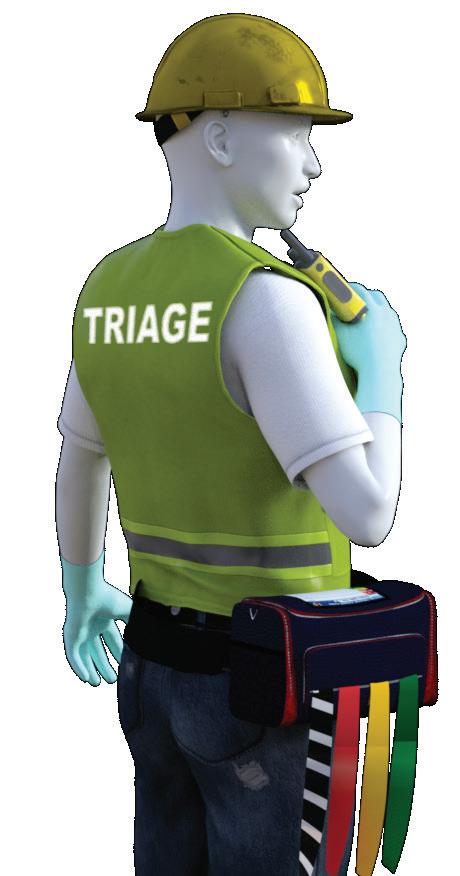






CERTResponder.com 13 JOIN OUR TEAM!
©2019 SSM Health. All rights reserved. SLU-STL-17-312522 8/19 Coming soon in September 2020! Newly designed to promote healing and well-being. Master the Art of MCI Triage in an immersi e D en ironment. There's ne er been an thing close to this. Bra o! - Henrie Watkins - Emergenc Preparedness Ed cator S.T.A.R.T. Triage Online Cer fica on Co rse
able
se
real mass cas alt incident. Watch the co rse pre ie ideo Get Cer fied Toda at LearnTriage.com Special CERT Member Disco nt Normal . No Onl . ( se promo code CERT at checko t)
As a member of a first-in triage nit, o ill be immersed in a ideo-based lesson plan and learn all aspects of S.T.A.R.T. triage incl ding scene set- p, pa ent care and triage tac cs. This co rse takes o be ond j st kno ing hat S.T A.R.T. is, it ens res o ill be
to
it in a

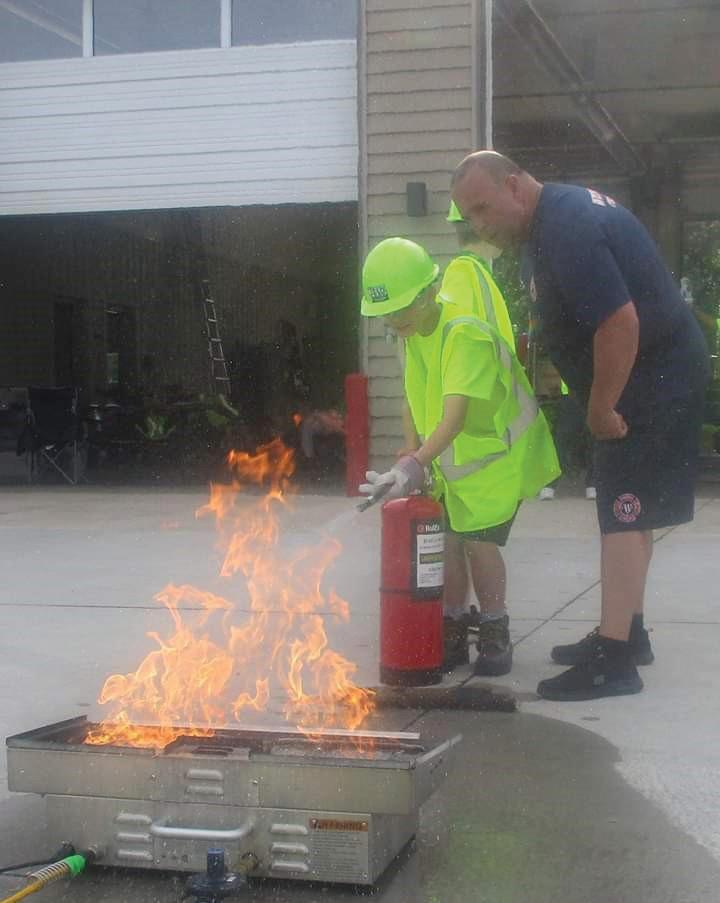
Teen Emergency Response Training
IMPORTANT IN NATIONAL RESILIENCY EFFORTS
BY MARK ROSENBLUM, MID AMERICA TEEN CERT DIRECTOR
With recent tornados, earthquakes and flooding, training teens how to respond to emergencies is busier than ever.
Over this summer, students completed several intensive Teen Community Emergency Response Team (CERT) training courses, enabling them to provide assistance in the event of catastrophic and other emergency situations. Students from all around the Warren, St. Charles and St. Louis counties now know what it is like to be a responder on a disaster scene.
Teen and adult students participated in four Mid America TEEN CERT training opportunities, beginning in May at Beaumont Scout Reservation and Wentzville Fire Protection District Station #3. Shortly thereafter, Warren County held
its’ first ever teen training at their Emergency Operations Center (EOC), followed by another class at Indian Camp Creek Park. During the summer break, these classes generated an additional 156 graduates, who are now ready to make their communities safer and assist if needed during natural, technological, or intentional disasters.
Students who participate in the Mid America TEEN CERT program are exposed to the practical and theoretical fundamentals of responding to a number of emergency situations that may impact their community, school or workplace.
14 CERT Responder Magazine
Marthasville Volunteer Fire Department Firefighter Justin Deeter shows a student how to aim a fire extinguisher.
Fire Captain Steve Hayes from Wentzville Fire Protection District tells a student to sweep the fire extinguisher across the base of the fire.
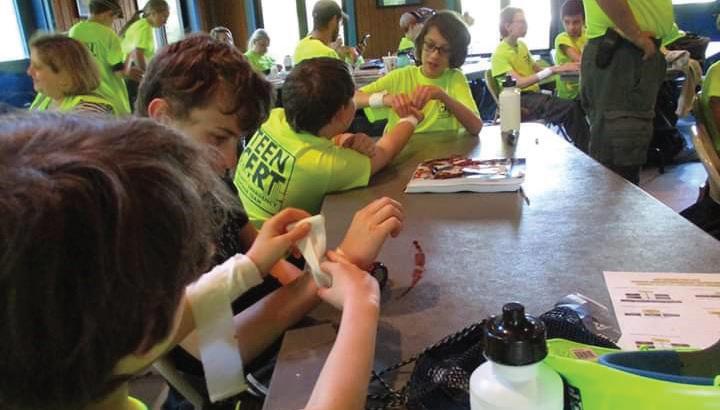

Students learn disaster first aid, fire suppression, search and rescue, and how to triage and treat patients during a mass care event. Participants are trained in vital skills in first aid, emergency communications, fire safety and suppression, light search and rescue and disaster psychology, which helps students understand how chaos and hysteria affect victims and responders and how to work through stressful situations.
These skills will help them to go out and make their homes, communities and schools safer, which makes the region, state and nation more resilient. Youth are incredibly resilient and may be able to contribute ideas and actions during a disaster.
Unfortunately, there is a lack of adult CERT programs willing or able to teach to teens, and even less actual TEEN CERT programs training youth these important skills. The shortage of teen emergency preparedness training programs is evident; teens and teen organizations such as 4-H, HOSA (Future Health Professionals), Scouting, American Heritage Girls and others, request numerous classes through Mid America TEEN CERT, however newer CERT guidelines may limit the ability to teach all of the groups.
The public needs to be made aware that teen emergency readiness programs exist, and every effort must be made at the local, state and national level to

alleviate obstacles in the way of training youth for emergencies.
Youth can play an important role in disaster preparedness and recovery efforts. Emergencies can happen anywhere, and the training is about teaching people how to stay safe and assist others at home or in their neighborhood before professional responders arrive. Youth preparedness education is vital to building and maintaining resilient communities.
By involving youth in disaster planning and recovery, it can increase their awareness of hazardous situations that may occur in their neighborhood and teach them how to respond in various types of emergencies. CERT

CERTResponder.com 15
Students learn how to bandage wounds and how to stop bleeding.
Training Officer Stephanie Wahoski from Warren County Ambulance District and Mid America TEEN CERT Program Director Mark Rosenblum provide assistance carrying an injured patient to the treatment are during a mock disaster scenario.
Students listen intently and take extensive notes throughout the TEEN CERT course.
Warren County Ambulance District Training Officer Stephanie Wahoski showing a student how to properly splint a broken leg. CERT Responder Magazine’s own Chris Wahoski from CERT Responder Magazine is taking the photograph.
CERT SPOTLIGHT

Focus On
Randy Gabel
CERT Instructor
Eureka, Missouri
Ihave been a CERT Instructor since 1999 in the Eureka Community, (Eureka Fire Protection District). I have been a Train the Trainer instructor since 2004 for the State of Missouri. I have attended the Emergency Management Institute (EMI) (FEMA) for several Instructor Trainer programs. I represented the State of Missouri for a FEMA project to update and rewrite the CERT TTT National Program in Washington DC in 2009.


WHAT IS THE BEST PART ABOUT BEING A CERT COORDINATOR?
The best part is meeting all kinds of people from numerous communities anxious to learn these important skills. There is a feeling of accomplishment when they finish the program and feel they are better trained and prepared to help themselves and their family and neighbors should some kind of emergency occur in their neighborhood and community. Every person we train to help themselves is one less we have to worry about should something occur. They are prepared for small disasters such as an ice storm, sever weather, or even how to shut off their water if they have an accident and a water line in the home breaks
WHAT DO YOU CONSIDER YOUR GREATEST ACCOMPLISHMENT?
I feel like that I have done a lot to better prepare my community and many others all over the area. I have had a few people contact me over the years and tell us what they learned has at some time been used to help themselves or someone else. Its kind of like paying it forward, knowing that you have impacted and maybe even helped save a life or lives by the training I have provided to our CERT Members.
16 CERT Responder Magazine


WHAT DO YOU DO FOR FUN?

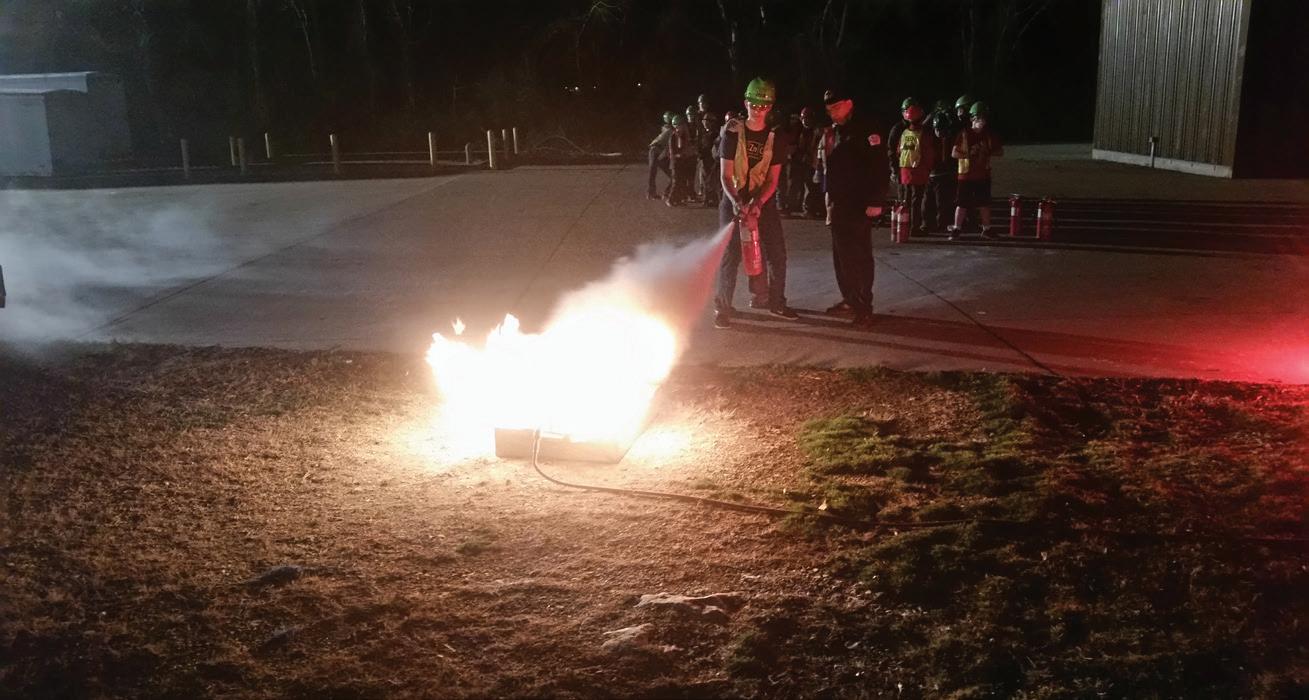
I enjoy spending time with family, having our children and our many nephews and nieces over for a barbecue and swimming. The holidays are always great when we get as many of us together as we can. I also love to go to car shows and look at the older model cars and hear stories about them from their owners. It is fun to explore the cars and trucks, especially if I find an older model Fire Truck, ambulance or police car.
HOW CAN THE PUBLIC SAY
“THANK YOU”
AND MAKE YOUR WORK EASIER?
No thanks needed! I have the satisfaction of knowing people leave our programs with a smile on their face and a thank you and handshake as they leave. Seeing their confidence in them selves and appreciation for the First Responders and CERT members that helped teach them is true fulfillment. My Thank you is knowing they have more self confidence and can be better prepared citizens and neighbors.
WHO HAS BEEN YOUR GREATEST INFLUENCE?
My Father. He grew up on a farm in rural Missouri with many brothers,sister, aunts and uncles. He made a 21-year career in the US Navy, and served and survived some time in Viet Nam. Then he went o to another 25year career raising me and my brothers, and working in the aviation field. He is a great leader in his career and in our family. He was also a scout leader for more than a decade and always lends a helping hand to his neighbors and family no matter what is needed. Thanks Dad! CERT

CERTResponder.com 17

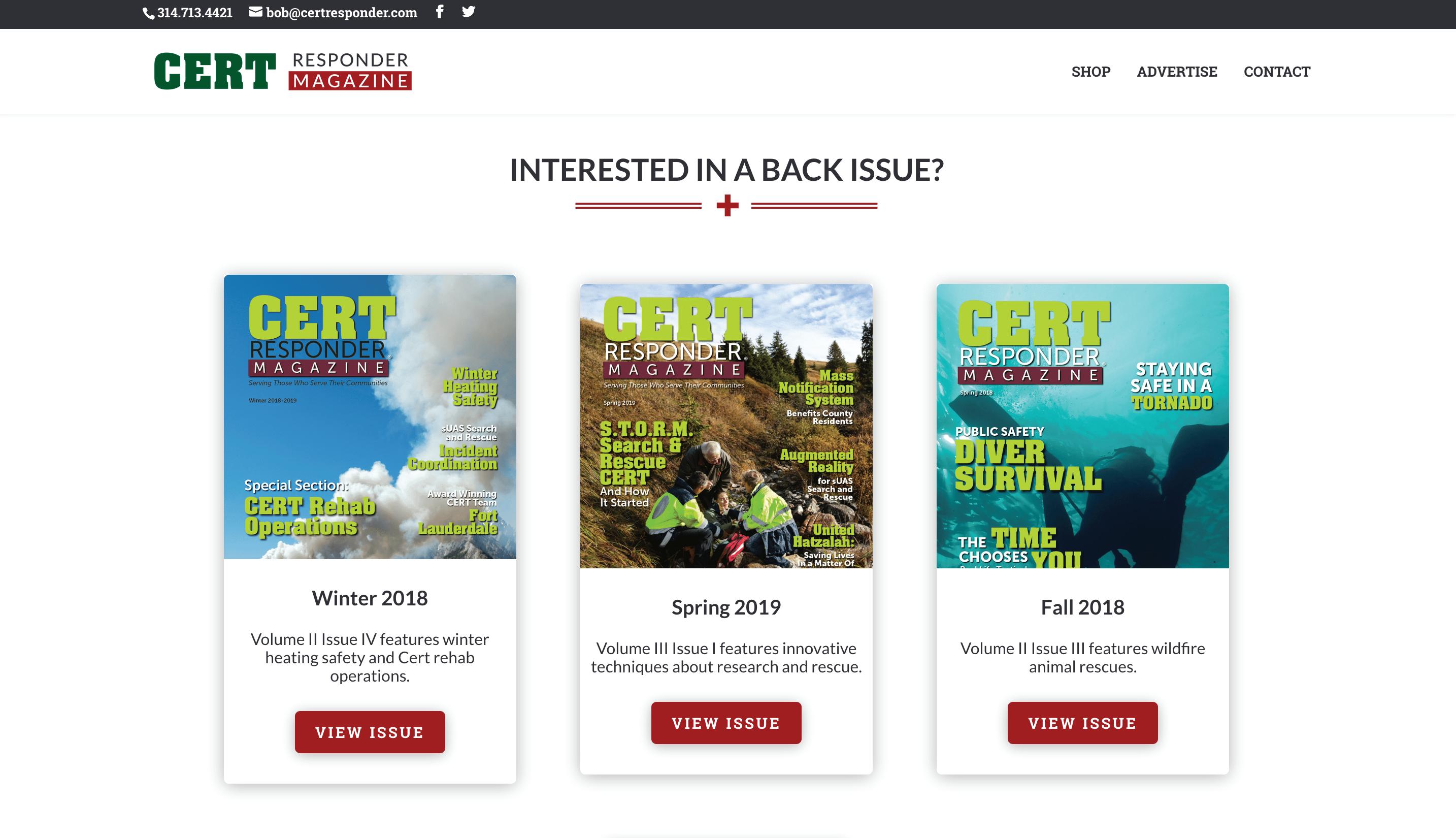

18 CERT Responder Magazine Name:_____________________________________________________________________________________________________ Company:_________________________________________________________________________________________________ Address: ___________________________________________________________________________________________________ E-mail address: _______________________________________________Telephone: __________________________________ Payment Method: ❏ Check ❏ Charge: Credit Card Number:__________________________________________Expiration Date:_____________Security Code:_______ How did you hear about us? __________________________________________________________________________________ Subscribe Now! SUBSCRIBE ONLINE to CERT Responder: www.certresponder.com/subscribe MAIL PAYMENT OF $24.99 TO: CERT Responder Magazine | 629 Salt Lick Rd. | Saint Peters, MO 63376 CERT RESPONDER MAGAZINE Check out the new www.certresponder.com website!
TAUT LINE HITCH

INSTRUCTIONS
The TAUT LINE HITCH takes the place of a slide to tension or loosen a loop in a line (like a tent guy line). This knot grips well, as long as there is tension on the “taut” side of the loop. It is useful when the length of a line will need to be periodically adjusted in order to maintain tension. 1 2 5 3 4
PART 9 IN OUR ONGOING SERIES
• Useful for lines that may need adjustment.
• Campers like to use this knot to secure tent guy lines
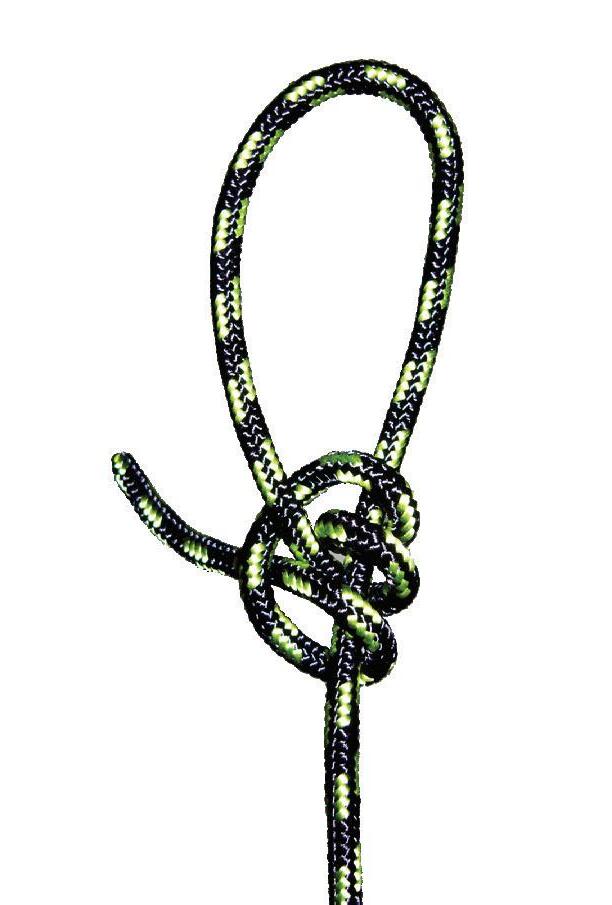
1. Loop around the support and wrap the end around the standing part.
2. Wrap it once more ad bring it out of the loop.
3. Wrap it again.
4. Hold and pull to tighten.
5. Slide to adjust the tension.
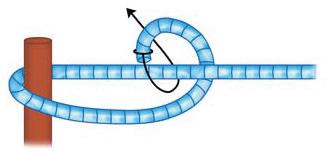



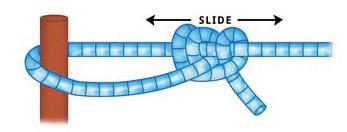
CERTResponder.com 19
sUAS Equipment Maintenance
Part 5
BY JAY MANLEY
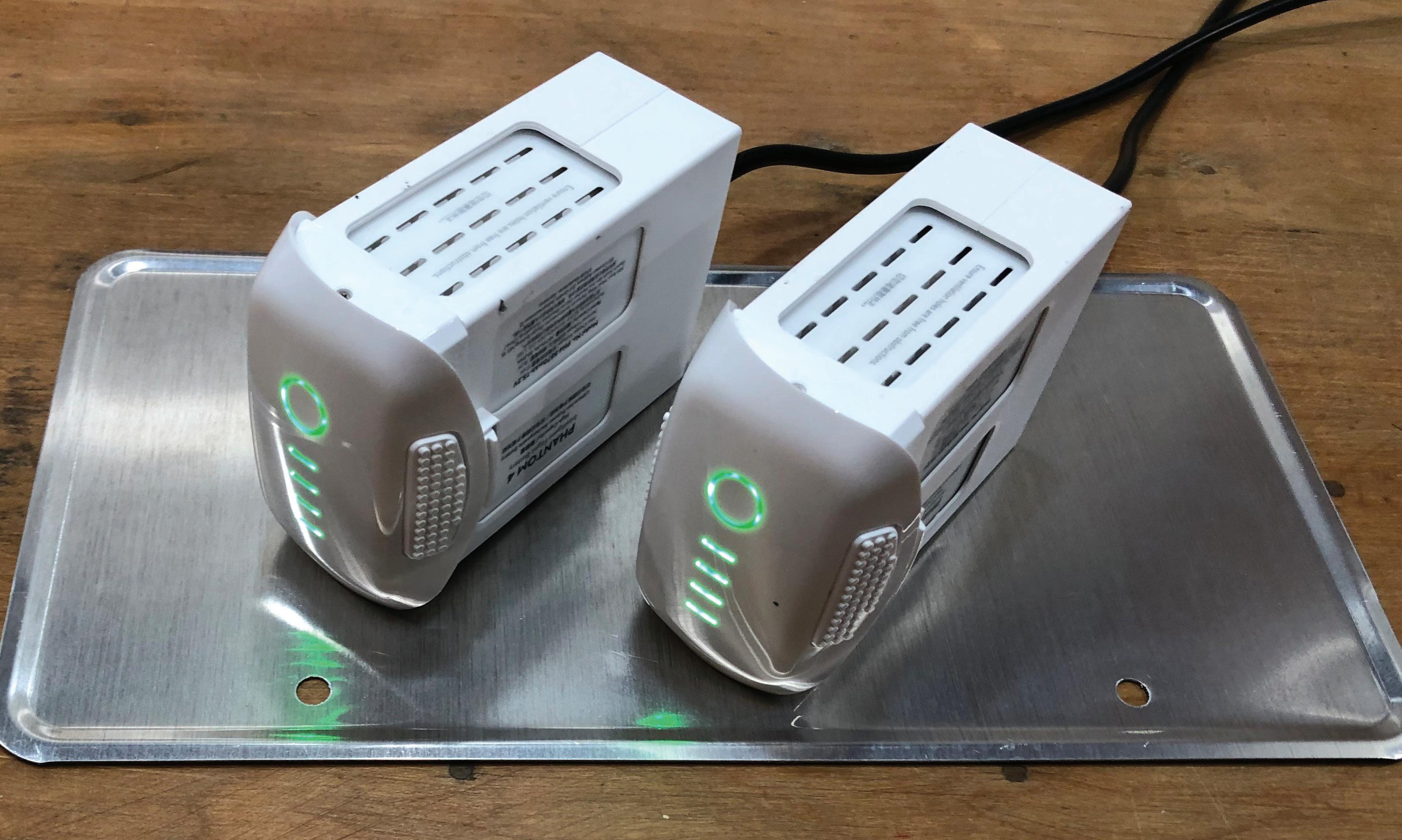
Ater some recent events, questions have been raised about sUAS maintenance, so here are some high points to consider when keeping your aircraft mission-ready.
BATTERIES
Powering our sUAS via batteries is something we all need to do, whether it’s for primary thrust, or for merely running servos and actuators. Battery care alone could be a multi-article discussion, but lets boil it down to the most critical items:
• When to Charge – You’ve purchased several batteries and went out and flew two of them to 10-15% capacity. Do you leave them at that until you fly again? Now, it may be “old school”, but I much prefer to keep my batteries full and let them do their self-drain that many of them now do. Now, for the other “full” batteries, you might wait until you need to have them ready to charge them again – but wait – you
don’t know when that is. So, you might consider maintaining at least 4 of 4 bars, meaning when you see a battery drop to 3 bars of 4, charge it again and remove it after it’s full. Then you’ll be flight ready almost no matter when the call might come in.
• Where to Charge – If possible, somewhere where if the battery self-ignited, it hopefully wouldn’t burn down your home/garage/shop where you are charging it. Recently, there have been several bad fires from sUAS’s that were caused by self-igniting batteries. Scary. Consider where you do your charging, and try to at least keep it off of carpet, reduce the clutter nearby, and if possible, charge
20 CERT Responder Magazine 16 CERT Responder Magazine
them on a surface that can withstand significant heat.
• Where to Store – After charging, many of us put our batteries in cases that we use in the field. Be aware that there is always a chance of self-ignition of the batteries, and where you store your sUAS while waiting for a mission could cause issues. I used to put mine in a coat closet, and when I realized they were sitting under many easily-flammable jackets, I decided I should move them to a spot where if they do have an issue, they hopefully won’t burn down my home. In my case, I put my sUAS cases on cement floors now when I leave them for any significant time.
AIRFRAME
Keeping your airframe clean and free from insects can be challenging, especially in areas with lots of flying bugs. More than that, after passing through your props, what is left can be quite slimy. So why should you care if your white drone is now multi-colored with insect goo? Two things become affected – aerodynamics and sensor packages.
It’s hard to know what kind of effect on aerodynamics bug goo has, but I have noticed a couple of minute less flight time when my airframe has flown through a bug swarm and gotten covered. Be careful, though, when you clean off the mess. Make sure that if you’re not just using a damp cloth, that any chemicals aren’t harmful to the airframe or sensors. Be especially careful near any fragile parts, such as ribbon cables and gimbles.
For the sensor package, it may block a critical sensor that helps the sUAS see obstacles and stop before any damage occurs. If you are flying in such a way where use of these sensors are of high priority, then you always want to check their status before taking off, and ensure no bug goo.
EVERYTHING ELSE
In the care and feeding of your sUAS, there are other areas you should always check either preflight or before leaving the comfort of your home:
• Props – Check for nicks and cracks and ensure that they are attached properly.
• Lens – Make sure that it’s bug-free and clean – using a lens brush and carbon cleaning polisher helps.
• Landing Gear – Attached, no cracks, and sturdy. Sometimes I use extenders when flying more remotely, so I’ll also check the extenders for cracks, and make sure they attach properly.
• Remote Control and Remote Tray – Ensure that the antennas are in good shape, and understand how to properly aim them when you are flying. A tray for your remote, along with a good harness, goes a long way to make you a better pilot. If you haven’t tried this yet, do it! It’ll make your flight much more stabilized.
• Case – If you use a large case, make sure that you know what’s in there and that you don’t forget to re-pack it after your last mission.
• Storage Devices – Whether your sUAS uses SD cards or hard drives, make sure that you bring them. Don’t be “that pilot” that forgets! And don’t forget to install them before flight!
• Sun Shields – Whether I’m flying in the middle of Summer, or the dead of Winter, a sun shield is a required piece of equipment.
• Hat – I once made the mistake of forgetting my Tilly hat at home for a mid-day flight, and it was extremely frustrating. The sun in your eyes, sun shield or not, can make for a frustrating day of trying to capture video.
WRAP-UP THOUGHTS
As you can likely see, for sUAS with primary propulsion via battery, battery maintenance is the leading concern, both from how to charge them, but just as important, where to store them between missions. From there, the overall airframe is a concern, along with all the sensors that you fly with. Finally, ultimately all of the supporting equipment needs to be checked over and re-packed so that it’s ready to go as well. Being “mission ready” is a duty that we all have as first responders. Knowing how to keep your equipment in top shape needs to be a priority. Good luck with your finds, and be safe in all that you do! CERT
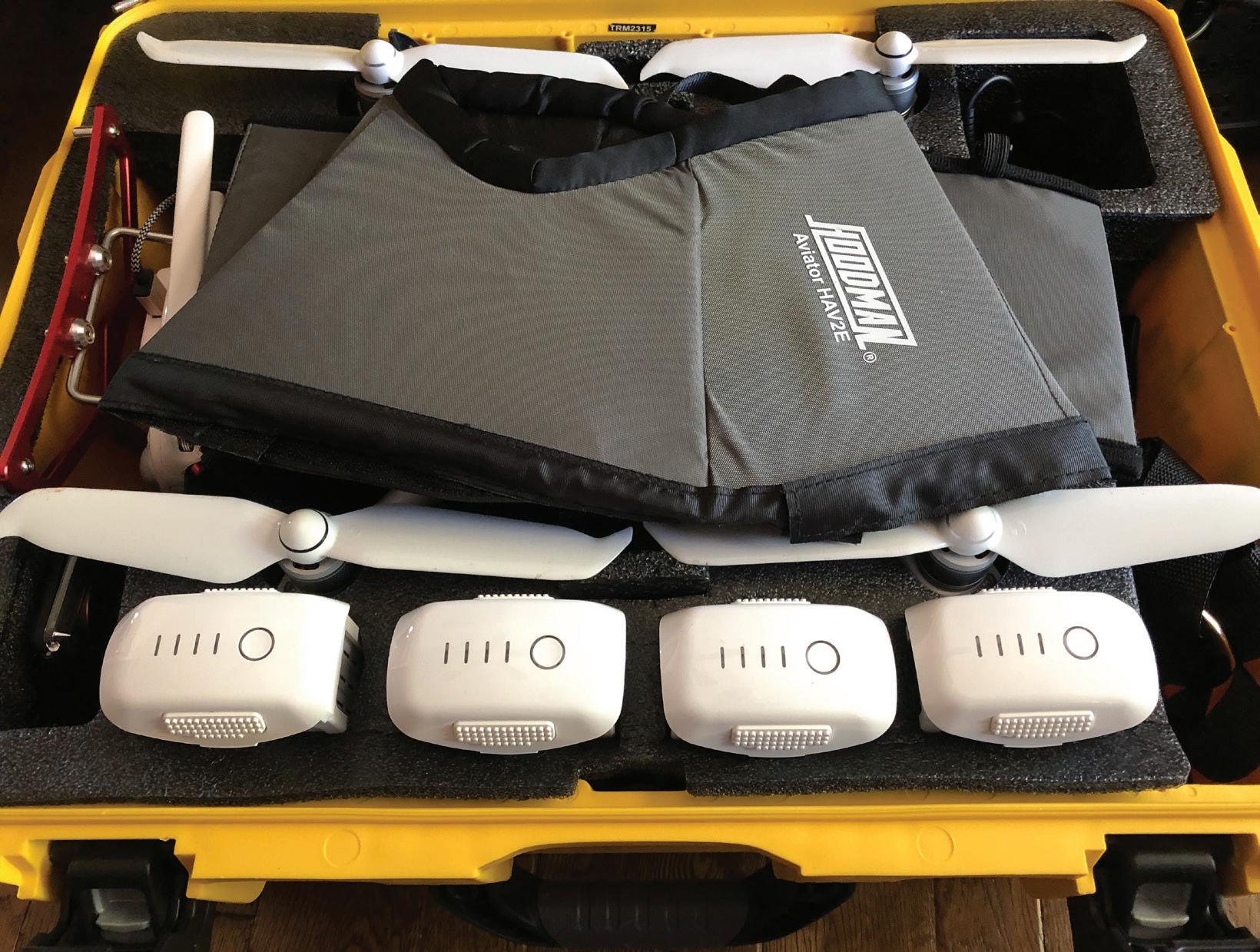

CERTResponder.com 21 CERTResponder.com 17
GOING WITH THE FLOW: Make the water work for you—
Swiftwater and Flood Rescue
BY ERIKA ROGERS
For 23 years Richard (Rick) Cummins, a licensed paramedic in Texas, has made a career out of helping the sick and injured. Throughout his career, Rick has attended nearly two dozen specialized trainings and has earned as many specialized certifications. He spent 14 years as a WMD/Hazmat Tech with Texas Task Force One, a DHS/FEMA Urban Search and Rescue Team and was a member of Travis County Search and Rescue, a volunteer SAR team in Central Texas for 16 years.
Rick took his first Swiftwater Rescue class in 1999 and began teaching in 2006. “I was a competitive swimmer for years growing up and am happiest when I am in the water,” Rick says. As one of the original authors and instructors for the Swiftwater Rescue training curriculum developed for Emer-
gency Services agencies over a ten-county region in Central Texas, he’s quite knowledgeable in this field.
Using his extensive Swiftwater Rescue skills, in the spring of 2018 in addition to his “day job,” he began working at Fathom Academy, which is the world’s first indoor, Swiftwater rescue

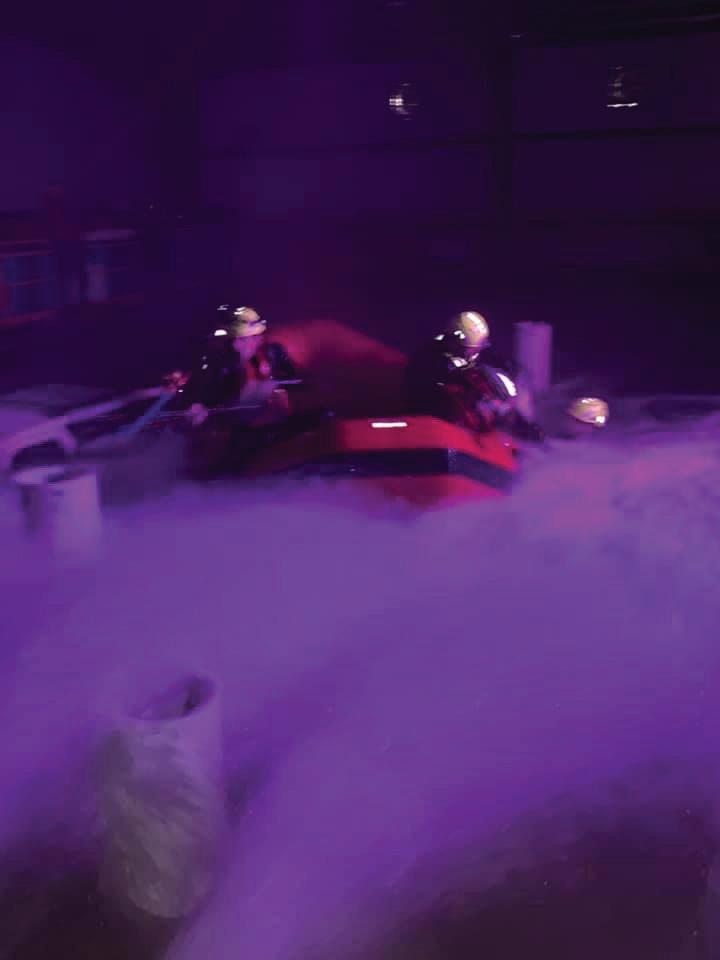
22 CERT Responder Magazine
MARINO
Reverse walk-up, developed by Rick Cummins
Night ops with boat
training center. At Fathom Academy, Rick is the lead instructor and is responsible for developing and maintaining training doctrine to ensure that the facility and training offered continues to evolve.
Rick says, “Swiftwater Rescue Training involves teaching first responders the various techniques from low to high risks for rescuing people in moving water. This includes shore-based operations such as throw bags, contact rescues when a swimmer enters the water, and basic boat operations. Our main goal is to teach rescuers to not get in the water, but if you have to, to be comfortable in the water. I teach people if they have to get into moving water, then make the water work for and not against them.”
Fathom Academy is an amazing place to train because simulated rescues are fully immersive with vehicles, rain, thunder, lightning, sirens, and spotlights. Simulations take place in water that is chemically treated, clean and free of dangerous rainwater bacteria. This allows Fathom to operate year round
Our main goal is to teach rescuers to not get in the water, but if you have to, to be comfortable in the water
regardless of time of day or outside conditions, and create multiple repetitions for each student.
Over the years, Rick has been involved in many rescues but two stand out to him. In August 2016, Tropical Storm Hermine hit and for Central Texas this resulted in a large-scale flooding event in Williamson County, which has a population of over half-a-million. According to Rick, “I had eight contact rescues that night including three at once - which is still my record. It’s where I developed my ‘hop on one foot’ technique; now taught at Fathom. My partner and I swam to a flooded house to rescue a mother and

her young son. We placed life jackets on both victims, but during our walk back to the shore it became so deep that I was the only person still able to make contact with the bottom…with one foot. I had the two victims and my partner maintain contact with one another and float and I ‘hopped’ us the rest of the way to shallow water. I have since made this a technique that I teach at Fathom.”
Another memorable Swiftwater Rescue Rick conducted was in 2012. “We rescued four victims from the roof of a car. This taught me the importance of pre-planning as well as don’t ‘what if’ it to death.”
Swiftwater rescue creates unique challenges for rescuers like Rick. The training he received and now teaches to others has allowed him to meet these challenges with greater success.
If you or your CERT team is interested in learning more about ‘making the water work for you,’ contact Fathom Academy located in Georgetown, TX, (www. fathomacademy.com) and mention that you saw this article CERT Responder Magazine CERT
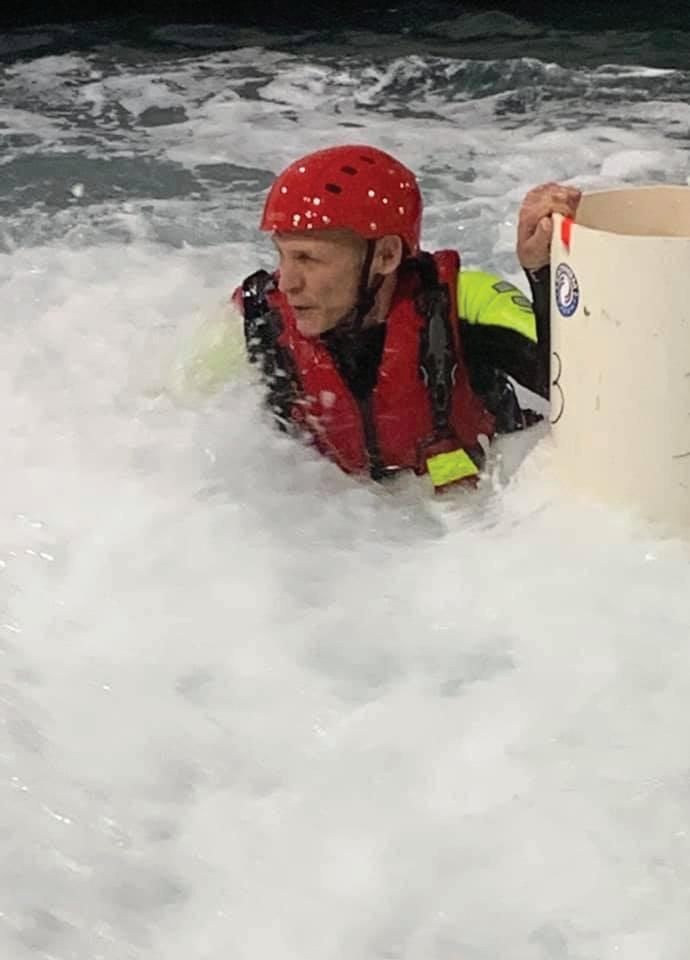
CERTResponder.com 23
Tension diagonal “Hopping” technique
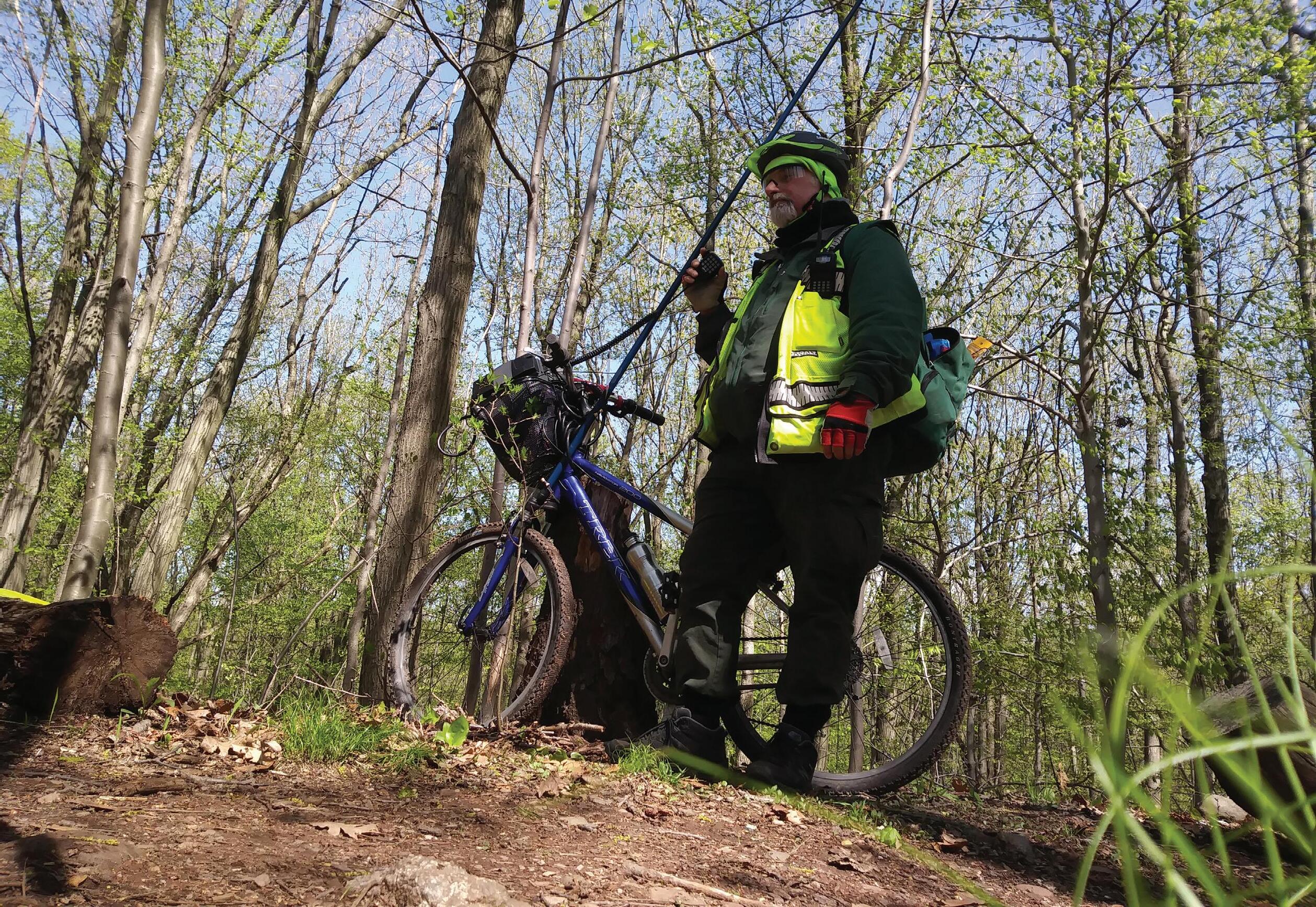
USING BICYCLES For CERT Deployments
BY VIN DITIZIO, KD2LOS, PORT RICHMOND CERT AND RESCUE, STATEN ISLAND
Port Richmond CERT, Staten Island’s CERT Team, watches over a lot of races for runner safety. A few of these are in wooded areas where an injured runner is not in a place accessible to an ambulance. One of these races, called the “High Rock Challenge”, is a cross between a 10K race and some kind of grueling basic training exercise. Participants have to climb walls, carry sand bags up hills, and other such things that make this the race with the highest rate for injuries, or just plain exhaustion.
24 CERT Responder Magazine
Luckily, we work alongside a volunteer fire unit, which has paramedics with golf cart-like vehicles that can navigate the trails. We are their eyes, directing them to injured runners.
One of the problems with this race is that it covers a vast area with a lot of hills and valleys that are a strain on our hand-held radios. I call it the “High Rock Radio Challenge” and it has plagued us for years. I have set my mind to solving this problem.
One of the things I’ve done is to get people to bring their radios to meetings where I check their antennas on an antenna analyzer. Some people are using bad antennas with a poor Standing Wave Ratio (SWR). When the SWR is bad enough, you can put 5 watts into an antenna and get only a fraction of a watt of radio waves going out. For most of our deployments, this works anyway, but add distance and terrain issues, and problems arise.
Other things have been tried at this race, like cross band repeaters and such, but I decided to keep it simple. I figured that any place you would put a repeater you could put a net controller with a more powerful radio. So I rigged my bicycle with a 25-watt mobile radio, battery, fiberglass telescoping pole, and a j-pole wire antenna.
I would have to deploy this quickly. The IC sends the team out only 20 minutes before the race starts, and I would need to get in position for a radio check. So off I went, pedaling down the trail.
A problem arose when I quickly realized that I was not in good enough shape for bicycling on these hilly trails. I was desperate to deploy, so I pushed myself, making it only half way to the hill I wanted. Going up this hill I was sucking air like I had been under water for a few minutes and was stumbling like a zombie.
Part of the problem was that as I was cobbling this together at the last minute, I chose a battery that was way too heavy and far more than was needed. (It was at 96% capacity after the deployment!). I have since gotten a smaller battery. I have also gotten the exercise bike out of the garage to train for next year’s challenge.
Comms were excellent this year with only one unit in a valley cutting out a bit. Getting that comm to repeat himself was necessary.
Consider the bicycle. The bicycle has a long history of use in the military. The Swiss army had bicycle units until relatively recently. Bikes were a secret weapon of the Japanese in WW2. The British would deploy a road block in the jungle that would quickly be surrounded by soldiers on bikes using narrow
trails. On the Ho Chi Minh trail in Vietnam, bikes were used to transport supplies. They didn’t ride them. They strapped huge baskets to the sides and pushed them. City police use bikes in areas where it makes chasing criminals down narrow alleys easier. Here in New York City, bicycle messengers have been both noted and notorious for the speed they can deliver messages. Some even used brakeless racing bikes while holding onto cars for high speeds (NOT RECOMMENDED!). Do an internet search with the words “bicycle ambulance” and you’ll find where, in Africa, they have trailers for bikes that they can strap patients on for transport. Bicycles are immune to traffic jams.
In rubble strewn streets where it’s impassable to cars, bikes may be able to navigate. They can be lifted over obstacles. They might be ideal for initial recon, sweeping through an area quickly to let the IC know what the team will be dealing with. Bicycles can deploy a unit much faster than on foot. Where comms are really bad, they can be used as couriers delivering messages. Bicycles can be easily transported by cars on racks, or thrown into trucks. In a long-term disaster where gasoline is scarce, a bicycle needs no fuel.
Some of the above can be said about motorcycles used for trail riding, but in my area that would require a motorcycle license that I don’t have. It would also be a long wait to find a few thousand dollars in the sofa cushions to buy one.
But the bicycle was just sitting there in my garage. There may be one sitting in your garage too. So consider the bicycle. It may have a place on your team. CERT

CERTResponder.com 25
RADIO AMATEUR CIVIL EMERGENCY SERVICE (RACES)
Warren County Missouri
BY WAYNE LENZING
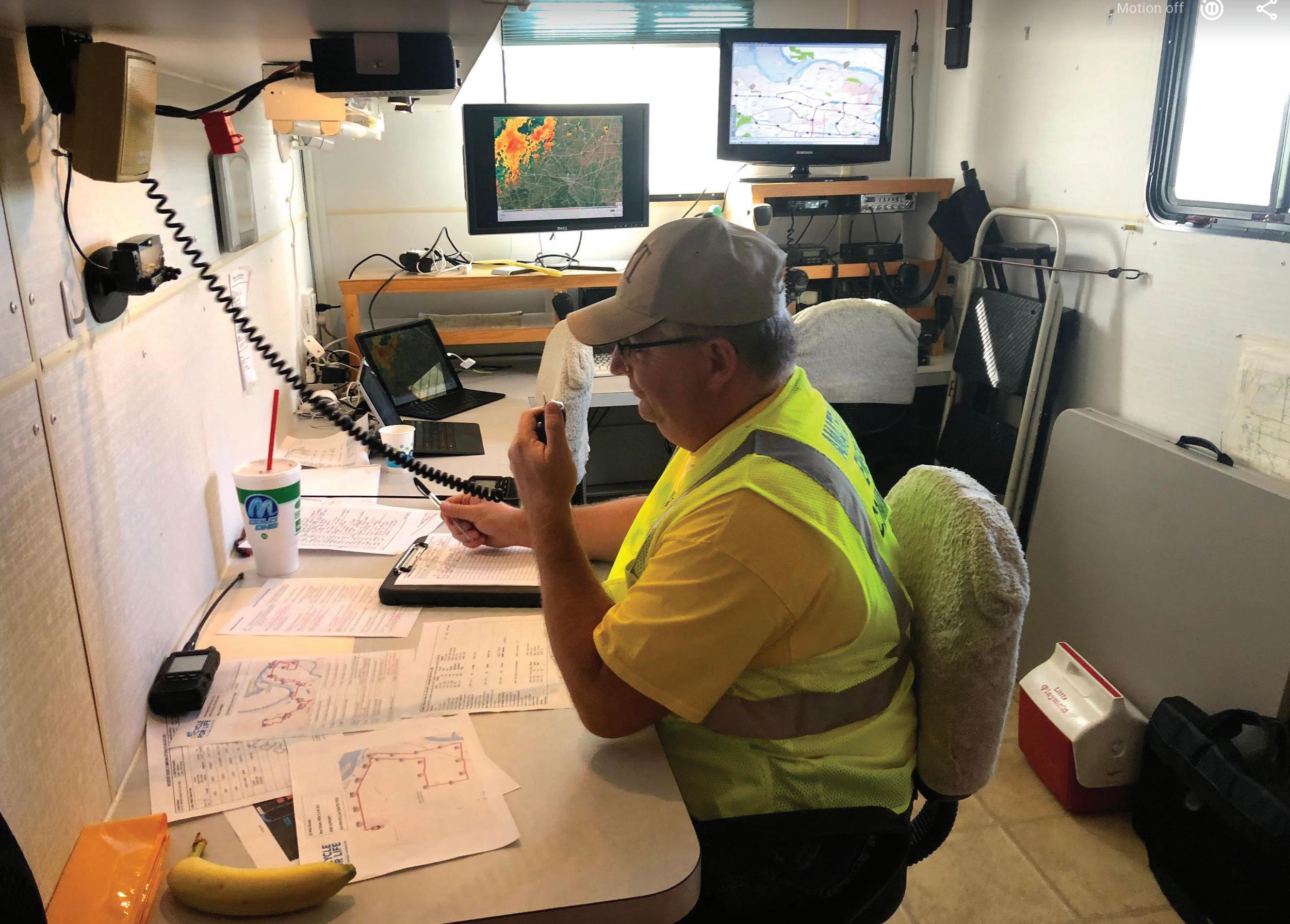
In an emergency, communications are critical. While our emergency providers generally have robust communications systems, any system can fail. That is where amateur radio plays a key role in supporting all forms of critical, life, and property saving communications.
26 CERT Responder Magazine
RRT Interior Operation
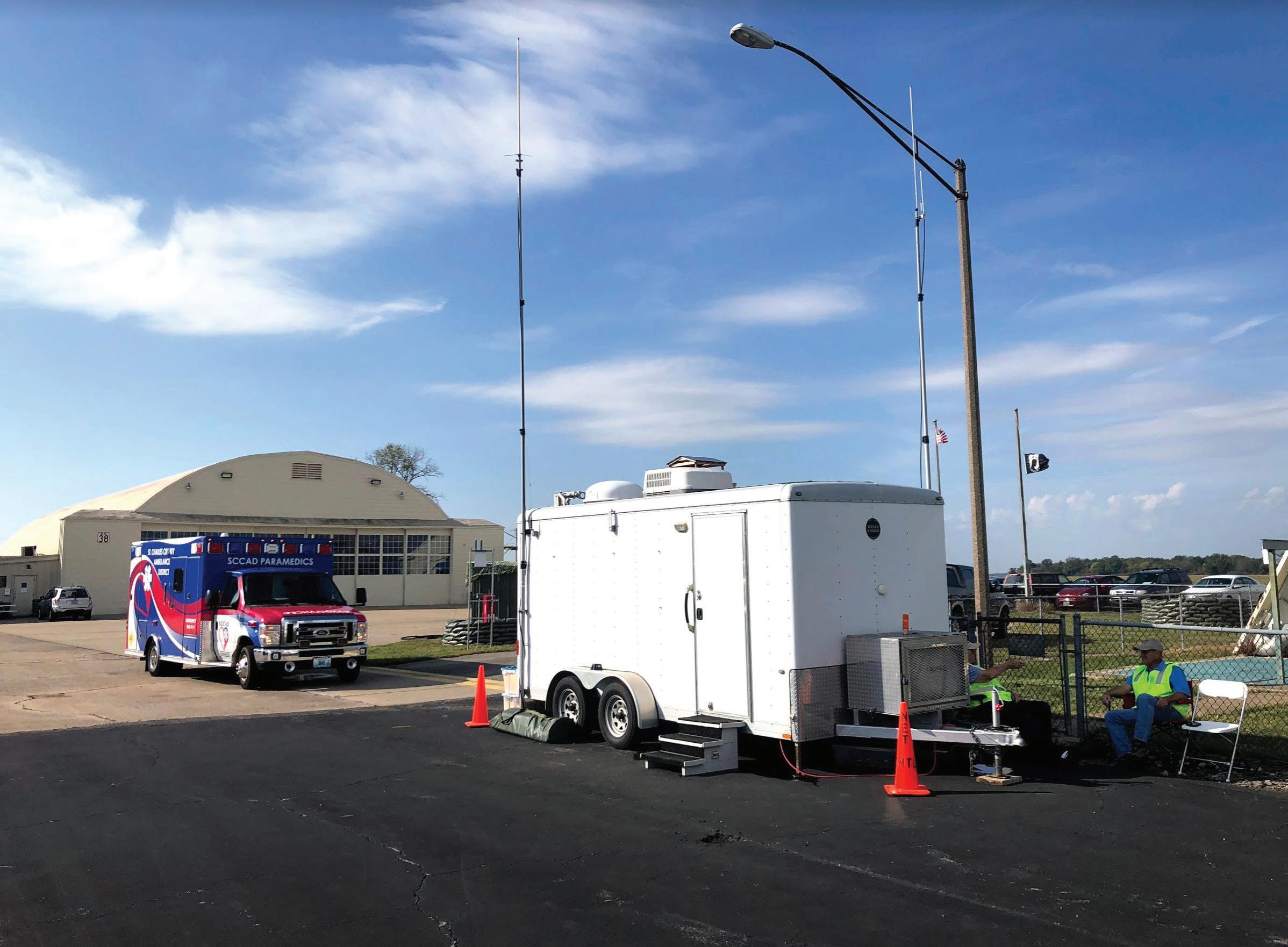
Recently, Mr. Michael Daniels, Director Warren County EMA, reached out to an organized group of Amateur Radio operators. He asked that they provide radio communications in the event of an emergency that renders normal means of communication in the county inoperable. These backup emergency communications needs could arise in the event when usually reliable county radio system or telephone service fails. The chances of this happening are not farfetched. It could be an earthquake along the New Madrid Fault, severe flood along the Missouri River, a tornado, or even an accident as simple as a hazardous material carrying tanker truck or rail car explosion. An outage could also occur because of a simple accidental severing major telephone or fiber cable.
While the advent of the internet may seem to have lessened or even eliminated the need for communication via radio,
Radio Amateur Civil Emergency Services (RACES) is a federally charted entity that uses amateur radio stations during times of local, regional, or national civil emergencies.
catastrophic events such as hurricane Katrina and super storm Sandy, along with tornadoes such as the one in Joplin, Missouri, all take their toll on communication infrastructure. In addition, events like the wild fires throughout the western states demonstrated that nature can easily
disrupt the means of communication that we have come to consider normal and readily available.
Radio Amateur Civil Emergency Services (RACES) is a federally charted entity that uses amateur radio stations during times of local, regional, or national civil emergencies. It is just part of what amateur radio operators volunteer to do. To understand how it all helps in emergency communications support, it is important to understand what an amateur radio operator, known as a Ham, is and can do. What is a Ham radio operator? Amateur Radio Operators are individuals who have dedicated time and personal resources to learn and develop skills needed to effectively operate radios and antenna systems to both receive from and transmit information to other Hams. Anyone can buy a radio to receive communications. However to transmit, you must obtain a license from the Federal Communications
CERTResponder.com 27
RRT Cistic Fibrosis Setup
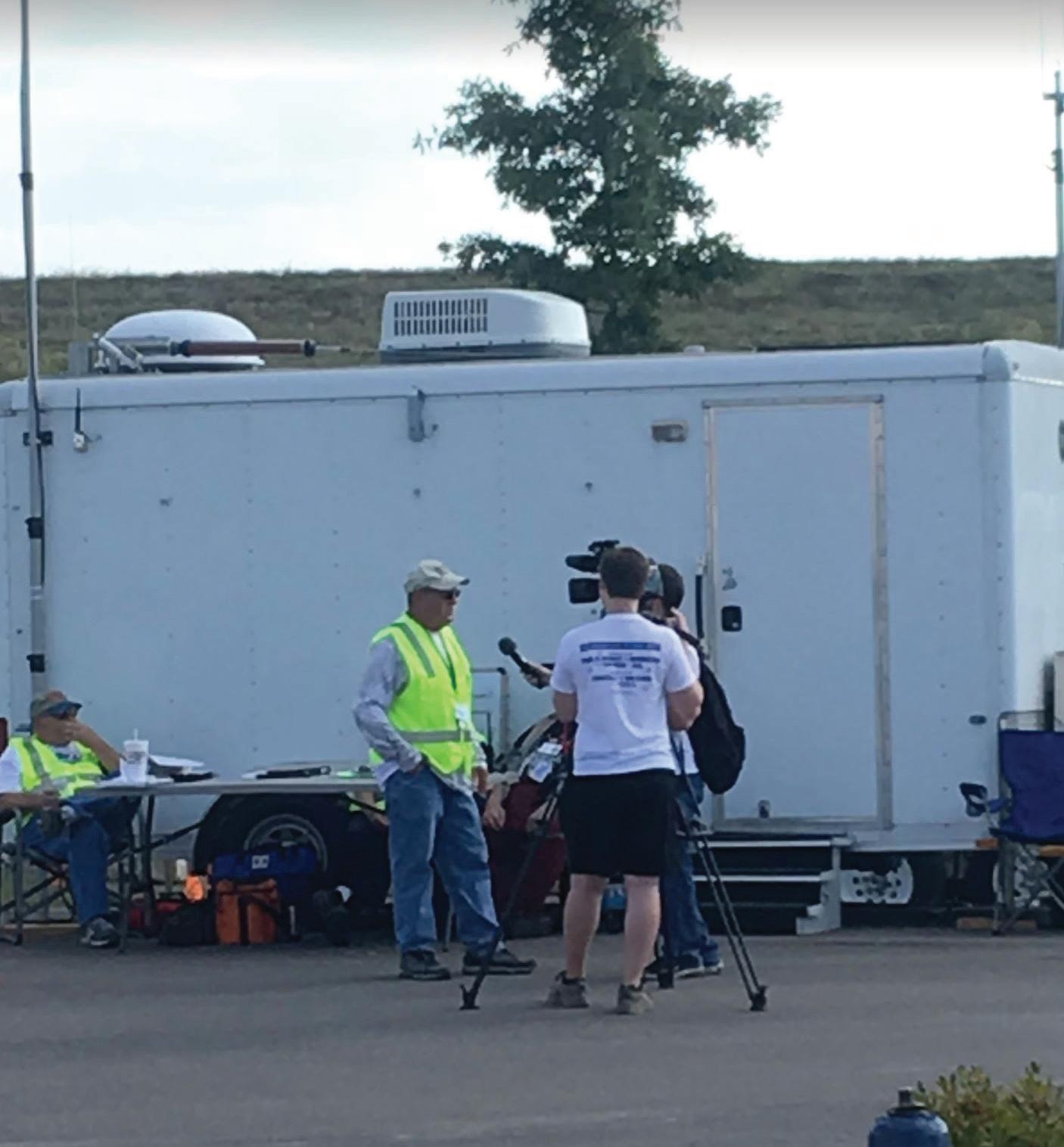
Commission (FCC). In order to become a Ham, you cannot simply buy equipment and begin operation. There are three license class levels that encourage the building of skills and technical knowledge. To obtain a higher class license, individuals are required to pass a test based on theory, operation, and the law. One major change from past requirements is that the use of Morse Code is no longer necessary. Of interest, many folks familiar with Ham radio think of it as just a couple of people chatting with each other. In reality, Hams have been in the forefront of the development of electronics, antennas, linking computers to radio equipment, the use of satellites and GPS, and even the understanding of propagation of radio waves in the ionosphere that surrounds our planet. In fact, in the early 1900’s when frequencies were allocated to the amateur radio community, those given were thought to be of little value. That remained the thought until the Hams developed equipment to utilize the unique propagation properties that surround us, and these concepts are deeply ingrained in all earth-based long-distance radio communication today. Experimentation is a long-time honored part of this hobby, which has enhanced the use of radio wave communications tremendously throughout the decades. Computers and software-designed radios have changed the hobby, where nearly all knobs associated with the radios our parents used are obsolete and nonexistent. We are all used to sending emails via the internet, but Ham operators can now send messages, emails, and even television images over the air. They do this using equipment that is suited for local and regional communications, and worldwide contacts for exchange of information.
As a CERT member, those reading this are aware of how to learn about and respond to localized situations where our neighbors need assistance. When there is a larger scale incident, we may find that
While the advent of the internet may seem to have lessened or even eliminated the need for communication via radio, catastrophic events such as hurricane Katrina and super storm Sandy, along with tornadoes such as the one in Joplin, Missouri, all take their toll on communication infrastructure.
local means of communicating is disrupted, destroyed, or overwhelmed. This is what has happened in the larger disasters with cell phone service either unavailable or unreliable because so many calls were being made from within the affected area by loved ones trying to make contact. In these instances, the local, county, and state
agencies that are responsible for assistance will be activated. From the point of view of the Amateur Radio community, the first response would be by a group known and the Amateur Radio Emergency Service (ARES), and then if the incident requires governmental oversite, the Radio Amateur Civil Emergency Service (RACES) will be activated. Though individual Amateur Radio operators may be used for both, there are very specific differences between the two.
These have been listed in the specific order in which they would be utilized during an emergency. Every licensed amateur is eligible to voluntarily register with their local ARES manager to provide assistance as necessary, and as designated by the local Emergency Coordinator. Since ARES is an amateur service, only licensed amateur radio operators are able to join this organization, which is under the supervision of the American Radio Relay League (ARRL). Most emergency situations are fully handled by ARES teams. However, there may be an instance when it escalates to a level where it becomes a declared emergency, in which governmental oversite becomes necessary. In these instances, there is the potential where radio communications are fully controlled by governmental agencies, as outlined by the FCC. This concept was developed during WWII when radio communications by amateur operators ceased. The need for amateur radio communication was recognized, and the role of amateur radio operation was specifically outlined and detailed by the FCC, thus the Radio Amateur Civil Emergency Service was born and codified in FCC Rules. RACES is a part of the Amateur Radio Service that provides radio communications for civil-preparedness only, and is administrated by local, county, and state emergency management agencies, and supported by the Federal Emergency Management Agency (FEMA). Warren County, Missouri is located in
28 CERT Responder Magazine
RRT Leader Interview
central Missouri with a major river nearby, as well as interstate highways and mainline railroad traffic. These transportation networks have the potential to be impacted by all of the major disasters. Emergency management in the county determined that the addition of Amateur Radio operators to their emergency response was desirable. The head of their emergency communications approached a group of Amateurs that were located in adjacent St. Charles County who had already developed a plan for emergency response. This group is the Missouri Rapid Response Team (RRT). In 2009, one individual took it upon himself to purchase an 8x16 ft. trailer that can be easily moved to where it is needed. It is self-contained and self-sufficient. The RRT communication trailer is equipped with a 6,000-watt generator, base board electric heat, and air conditioning. On board radio equipment includes two HF radios for long distance communication, and two VHF/UHF radios for local contacts. All of these can be connected via computer and specialized programs to provide text messages and email so that large amounts of accurate information can be shared with the agency being served. This sharing is accomplished by having a portable “go kit” that also contains an HF and VHF/UHF radios, equipment to provide the text/ email capability, and a dedicated laptop computer. The “go kit” would be dispatched either to the served agency, or to a remote location along with trained Hams. Already attached to the trailer, there are both an HF and VHF/UHF antenna. This gives the RRT the capability of being operational within a few minutes of being setup on site. In addition to the ready-to-go antennas, there is coaxial cable, additional antennas, as well as pushup poles to erect other antenna systems as needed. The current 40 member RRT constantly trains in monthly classrooms
or in-filed exercises to maintain and hone their capabilities. In order to practice communications, the RRT provides radio support each year for three major events. One is called Race for The Rivers, where canoes and kayaks paddle a long-distance race in the Missouri River. RRT provides a net control that operates out of the RRT
From the point of view of the Amateur Radio community, the first response would be by a group known and the Amateur Radio Emergency Service (ARES), and then if the incident requires governmental oversite, the Radio Amateur Civil Emergency Service (RACES) will be activated.
trailer along with radio operators placed in motorized ‘chase boats,’ and monitors the safety of the paddlers. Along the river route, additional repeater systems are installed to ensure constant communication between the boats and net control. Additionally, RRT is in contact by radio with the event organizers. The effort takes upwards of 20 radio operators to complete. A second event where the RRT provides communications is called Celebrate St. Peters which is a local fair type event. Parking is at a premium, so offsite parking is used. There are generally 10-12 buses used to transport people to and from the various parking lots during this two-day event. In 2018, organizers estimated 8-10 thousand people were transported at the finale of the event. They were all moved within 1 hour. RRT has been providing this service for a number of years, and though there is general oversite organizers, have turned coordination of all bus traffic over to the RRT. The third event is the local Cystic Fibrosis bicycle race which includes both a 50 mile and 100 mile route. Radio operators are placed on vehicles that tend to bicycles that have broken down, and operators are also placed at the multiple water stations along the routes. To read additional information on the RRT please visit www.k0rrt.org.
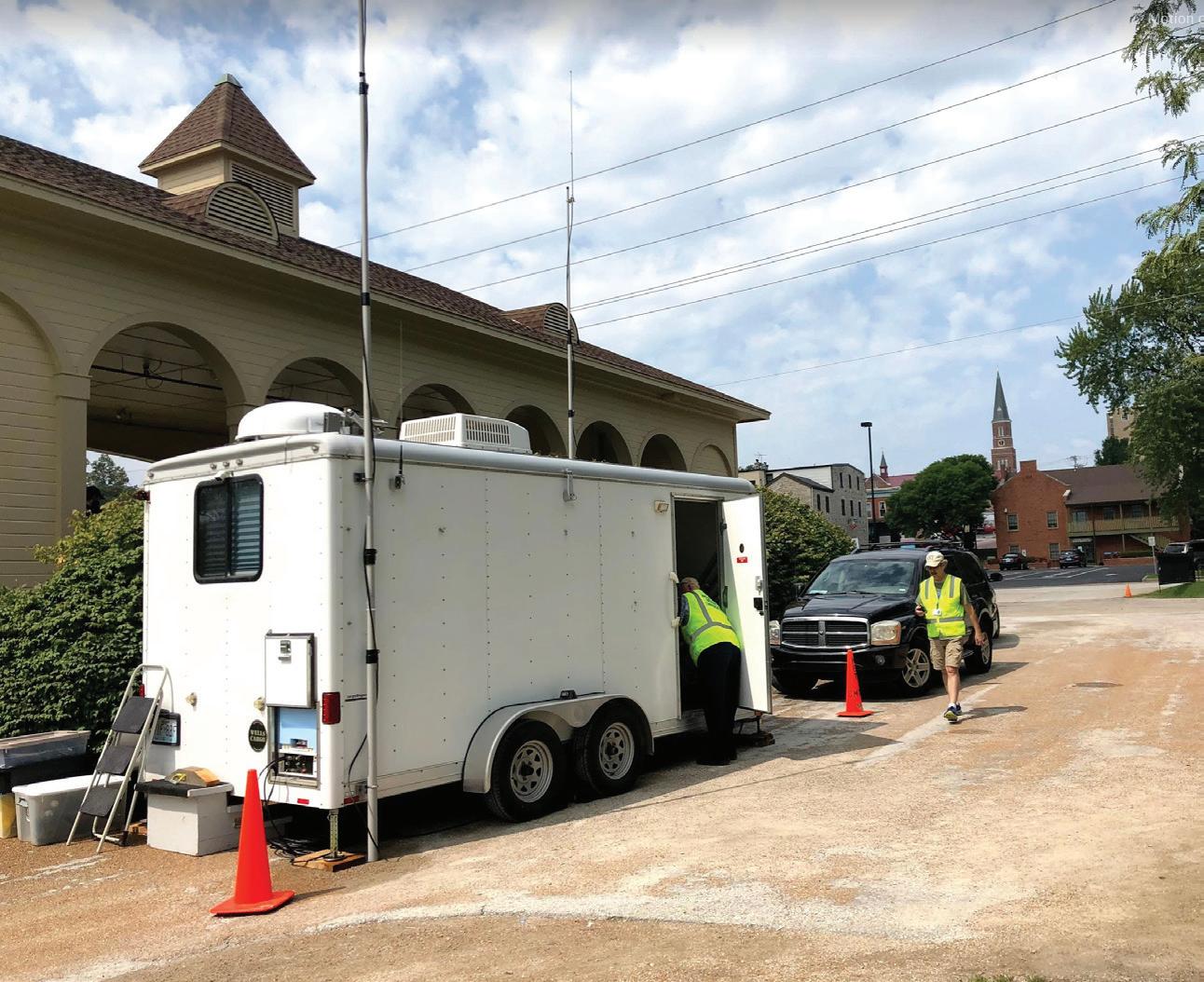
You can see that communications are critical to quickly and successfully coping with emergencies, both minor and major. When normal communications systems fail, Ham radio operators in Warren County are trained to step in and assist. They are part of the county, and because they are true amateurs, they do it for free. RRT and other ARES/RACES members are proud to be a part of solving emergency problems for the public. If you are interested in learning more about Ham radio, please contact your local amateur radio club or check out www.arrl. org. CERT
CERTResponder.com 29
RRT Race for Rivers Setup
Managing Fatigue in a Disaster
BY BRETT POSTELLI
The U.S. has experienced and responded to thousands of disasters. In recent years, the number of Federally Declared Disasters have increased substantially in magnitude and frequency.
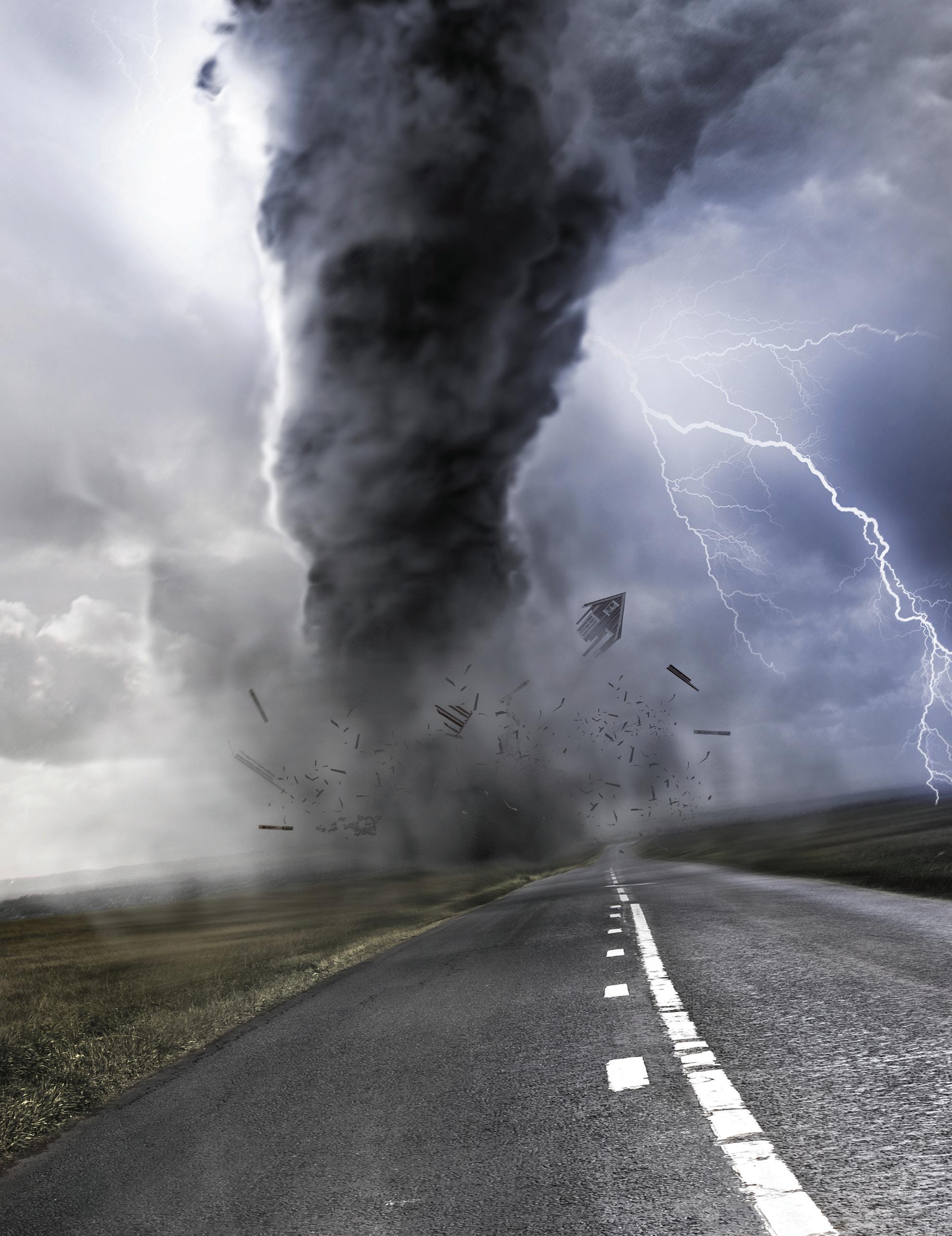
DISASTER RESPONSE FREQUENCY
President Dwight D. Eisenhower issued the first federal disaster declaration in 1953 after a tornado devastated four counties in Georgia. Since then, more than 4,000 disasters have received this designation. This year alone (2019), 44 federal disaster declarations have been issued for 26 states and one U.S. territory. Since June 1, Louisiana, South Dakota, North Dakota, Idaho and Vermont have all received major disaster declarations. (Data Source: Politico)
From 2016 to 2018, the average number of billion-dollar disasters totaled 15 each year, while the average for 1980–2018 was just 6.2 events per year. (Data Source: CNBC.com)
The U.S. experienced a particularly active year for natural disasters in 2018. In total, the U.S. was impacted by 14 separate billion-dollar disaster events:
• Two tropical cyclones
• Eight severe storms
• Two winter storms, drought, and wildfires.
Over the past three years (2016-2018) the annual average number of billion-dollar disasters was more than double the long-term average.
WHAT DOES THIS MEAN FOR RESPONDERS?
Short answer: “Get rest while you can!” Responders are battle weary. Many respond nationwide, going from one disaster to the next, working countless hours 7 days a week for months at a time with few breaks between.
RESPONDING TO A HURRICANE
Right before a hurricane makes landfall, there is a small window to get Phase I first responders and disaster relief contractors in place to fight the battle from within the potential targeted damage area. Public sector first responders will work around the clock during that particular event until the “emergency response” portion is over. As time goes by, fewer public sector responders are needed and they can return to their normal daily operating schedules.
When resources in a community are exceeded due to the scope and magnitude of a disaster private sector partnerships are critical to the success of this long and exhausting mission:
1. Emergency Push/Road Clearance to assist with Search and Rescue
ASHBRITT’S SAFETY CORNER
2. Residential Construction and Demolition Debris Removal
3. Collection/Separation and Disposal of Household Hazardous Waste, Electronic Waste, White Goods, Vegetative Debris
4. Cutting and Removal of Hazardous Limbs, Trees and Stumps
5. Marine Debris Removal
Note:
Phase 1: (Typically, last days to a couple weeks, working 12 to 14-hour days, 7 days a week)
Phases 2-5: (Can last up to 6 to 9 months or more on average and potentially into the next storm season, working 12 to 14-hour days, 7 days a week)
FATIGUE MANAGEMENT
During a large-scale disaster, response and relief personnel will work longer shifts and a staggering number of consecutive days with no breaks. Fatigue and job stress can come in many forms and happen simultaneously, e.g. strenuous physical labor, mental stress of conditions and workload, limited basic necessities, damaged/non-existent infrastructure, etc.
Disaster response personnel are a unique group of people, they sacrifice a lot personally, work unimaginable hours and get very little recognition for what they do. In many cases, it’s a thankless job, but it goes with the territory and we all willingly sign up for it, it’s either a job you love or hate, there’s no in between. Even for this unique breed of people, they too still need their mental and physical rest.
Fatigue can be defined as a state of physical and mental exhaustion that results from overexertion and lack of sleep (USCG). Your agency and/ or organization should create and implement an incident-specific plan to manage the fatigue of your workers. An incident-specific fatigue plan
should address the following:
1. Assessment – Describes the incident type and work performed.
2. Identification of Risk Factors –Describes the risk factors that workers may be exposed.
3. Controls – Describes the organization’s policies, procedures and work practices to control the risk factors.
4. Evaluation – Describes the process used to assess the effectiveness of the plan.
Fatigue is difficult to assess due to the effects it has on the many bodily functions like body temperature, sleep patterns, digestion, which is all part of our Circadian clock. All outside forces affect these internal rhythms and how the worker functions and performs their job. Performance is always best when the body is alert and the internal body activity is high.
OVERVIEW
Things to consider when managing fatigue:
1. The number of hours worked per day, per week, per month without breaks.
2. The number of physical hazards workers are regularly exposed to.
3. The number of hazardous chemicals workers are regularly exposed to.
4. The number of hours PPE is used, like chemical suits, respirators, etc.
5. Ergonomics, e.g. physical effort, repetition, vibration, temperature, etc.
6. Psychological and emotional tolerances.
7. Travel time to work, during work, and after work.
8. Proper eating and drinking habits.
9. The number hours of sleep the worker is able to get during rest periods.
Fatigue and job stress can come in many forms and happen simultaneously, e.g. strenuous physical labor, mental stress of conditions and workload, limited basic necessities, damaged/ non-existent infrastructure, etc.

Manage your fatigue, don’t let fatigue manage you! CERT

Brett Postelli, has 30 combined years of experience in public safety and private sector emergency response operations and a published author, (Hazwoper Handbook – 8-40 Hr. Hazardous Waste Operations & Emergency Response, ISBN-10: 1537136453, ISBN-13: 978-1537136455) and holds a number of national and international certifications. Brett serves as the Environmental Health and Safety Manager for AshBritt Environmental.

STRESS
CRITICAL INCIDENT What Happens After We Go Home?
BY EDWARD M. BEIRNE MS, EFO CFO NEMAA
In our daily lives, we are continually exposed to events, small and large, that produce certain amounts of stress. Generally, as we mature, we develop mechanisms to recognize and address the events and their impacts on our routines. If this sounds familiar, you’re not alone. Everyone experiences stress. When we acknowledge the presence of stressors, and then consider the scope and mission of our first responder and CERT activities, a discussion of a different type results.
Critical Incident Stress (CIS) is experienced by almost every first responder and CERT team member. The degree of stress and its magnitude, and how we react as an individual are what differentiate CIS from everyday stress. It is important to recognize that as humans we are individuals. Based on factors such as cognitive development, previous exposures, degree of success in recovery, and overall well-being, the physical and emotional response to CIS will vary widely. Let’s take a brief look at the factors associated with CIS and what tools are available to assist in management.
CIS results from a critical incident. Simply stated, an incident that distresses us outside of our normal, expected reactions is classified as critical. It is important to remember that our individuality and personal/professional experiences
greatly affect how each of classify an incident. As a beginning point of reference, an incident that destabilizes your sense of security or safety, or perhaps causes you to question your abilities coupled with an unexpected and extended emotional response may be deemed critical. These can be personal or environmental.
As can be imagined, any event (illness or injury) that causes the death of a loved one, friend, or colleague, will probably manifest strong emotional and physical reactions. Other examples may be a life-threatening experience or exposure and observation to any number of types of pain and suffering. Although not immediately apparent, the same reactions may result from personal attacks, or negative publicity (think social media). As we navigate these personal events, keep in
32 CERT Responder Magazine
mind that the world and environment around us can be harsh.
Environmental events that occur in the world and closer, in our communities, can have a similar effect on our reactions. Any number of natural disasters, or multiple fatality incidents, terrorism and war, certainly factor into our coping mechanisms. When these types of events strike closer to home, a magnification of emotional response can occur.
Knowing what a critical incident may be is helpful, and so is recognizing that how it may affect us emotionally and physically are normal reactions to abnormal events.
Based on factors such as cognitive development, previous exposures, degree of success in recovery, and overall well-being, the physical and emotional response to CIS will vary widely.
Immediately after a critical event, the most common emotions we see are shock and denial; these feelings are protective and normal. Shock presents as an intense disruption of our emotional state. This leads us to have a sensation of feeling stunned and/or dazed. Denial is simply not acknowledging that you have been exposed to, or that an event has occurred; you may not be feeling the full intensity of the event. Denial may result in a temporary sense of numbness or feelings of withdrawal from life.
Time is an important factor when we begin to examine the other effects of CIS. Soon after the event, the initial shock begins to subside. This phase is where we begin to see physical and emotional signs.
Your feelings may become intense and unpredictable. Be prepared for irritability and mood swings that could be dramatic as well as periods of anxiousness, nervousness, or even depression. It is normal to have recurring and clear memories of the event. You may experience flashbacks, and these could lead to physical symptoms such as headaches, nausea, chest pains, rapid pulse, hyperventilation, or sweating. Any pre-existing medical condition you have will magnify these reactions. Concentration or decision-making abilities may be challenging. Loss of appetite and irregular, poor sleep are common.
Just as CIS is affecting you, it also extends to those in your life. Personal relationships frequently become strained with arguing or escalating conflicts being common with family, friends, and co-workers. You can just as easily become withdrawn and avoid all interpersonal connections. Now that we are tuned into CIS and its effects, how we respond is important.
As mentioned previously, time plays an important role in determining our emotional responses and the degree to which we compensate. As we move farther away in time from the critical event, our coping mechanisms have had time to process information. Regardless of where we are in the cycle, it is important to note that there exists no standard pattern or “one size fits all” reactions to CIS. As individuals with different experiences, we process the stressful events at different paces. It is common
to have people respond immediately and also to have a delayed reaction (months or years). Recovery can be accomplished rather quickly where others need extended time frames. Again, these responses and reactions are normal.
Stress and its effects are cumulative in nature. This certainly applies in our conversation of CIS. Not only does our normal stress compound CIS, other past critical events may also factor into the recovery process. This is frequently seen in the military, first responder, and health care communities. The degree to which we as individuals can cope with the challenges of CIS and the emotional responses is proportional to the intensity and duration of the event. The responses to critical events are normal and predictable. We have several options to consider in the processes of recovery.
First and foremost, the feelings you are experiencing are absolutely NORMAL. Do not try to suppress them. Allow yourself the time and patience to heal and realize that this will be tough, but there are people and resources readily available to help. Communication is the key in the CIS recovery process. Talk and share with people who will listen empathetically and not judge. Keep a written journal of your feelings and thoughts as you process the event and your emotions.
Engaging in healthy behaviors and activities greatly enhances your ability to cope with and recover from CIS. Healthy, well-balanced meals and plenty of rest are the order of the day. Alcohol and drugs should be avoided. Physical activity and exercise are more important than you may realize. Additionally, returning to a familiar routine and establishing a sense of control will benefit the recovery process.
Professional help is always available through a Critical Incident Stress Management (CISM) program. The initial steps in CISM involve a Critical Incident Stress Debriefing (CISD). This should occur within 48 hours of the event and simply provides a safe forum to share your initial reactions, feelings, concerns, and to be educated on expectations, resources, and next steps in the process with other event participants. The CISD builds the platform for trust in sharing emotions and identifies the best path forward. The services of a mental health professional should always be considered, especially if more time is needed to progress through the recovery process. The participation in support groups, led by appropriately trained professionals, is also a powerful tool to assist in recovery.
CIS should always be expected when we consider the CERT mission and our activities within the first responder community. Knowledge that we all experience stress and process it in different ways should assist in achieving the best outcome post-event.
Stay Safe. CERT
CERTResponder.com 33



34 CERT Responder Magazine CERT MARKETPLACE AGOOD Graphic Design & Creative Direction • Magazines • Publications • Newsletters • Brochures • Advertising • Much More 314.275.2208 shermanstudios.com IS HARD TO FIND Fran Sherman For Design You’ve just found one. tiger@tigertravel.com 314-968-4410 800-875-4410 7967 Big Bend Blvd. Webster Groves, MO 63119 Making Dreams Come True since 1972 TIGER TRAVEL SERVICE Contact Us Today! www.certresponder.com/advertise
AUTUMN EVENTS
SEPTEMBER
SEPTEMBER 2
Labor Day
OCTOBER
SEPT 21-OCT 6
Octoberfest in Munich, Germany

OCTOBER 14
Columbus Day
OCTOBER 31
Halloween

NOVEMBER 3
Daylight Savings Time
NOVEMBER 11
Veterans Day
NOVEMBER 28
Thanksgiving

DECEMBER NOVEMBER
DECEMBER 7
Pearl Harbor Day
DECEMBER 25
Christmas
NOVEMBER 16, 2019 – JANUARY 12, 2020
Winter Festival of Lights Niagara Falls, ON

CERTResponder.com 35

More life-changing work. Less paperwork. Intelligently track training, qualifications, and volunteer hours with Merit. Sigma is now Merit merits.com | taylor@merits.com





























































































